During the Panasonic Z95A tests, we felt like we were holding a television that deserves to be called one of the best on the market. When it comes to picture quality, it is absolutely fantastic! OLED with infinite contrast, perfect blacks, and incredible brightness makes watching movies a pure pleasure. The micro-lens technology (MLA) has really made a difference. Thanks to it, the picture has gained not only brightness, achieving a spectacular 1500 nits in HDR content, but viewing angles have also improved – which are already quite good in regular WOLED panels. As a result, every scene looked so realistic that we felt as if we were part of it. We also checked how it performed in various lighting conditions – it dazzled without exception in both dark and bright rooms. We also couldn't complain about the sound. The built-in soundbar with Dolby Atmos surprised us with its spaciousness and dynamics, which is usually lacking in speakers integrated with the television. It's really solid support for cinematic experiences. The Panasonic Z95A also does not disappoint gamers. We tried out its gaming features – support for ALLM, VRR, a 144 Hz panel, and playing in Dolby Vision at 120 Hz is something every avid gamer will appreciate. Additionally, there are practical extras, such as the ability to record onto an external drive and a PiP function, which make everyday use of the television more enjoyable. Of course, we also noticed some downsides. Amazon's Fire TV operating system, while better than in older models, still has its flaws. The lack of some popular apps, such as Player.pl or TVP VOD, and poorly executed translations in the interface can sometimes be irritating, especially in a television of this price range. The Panasonic Z95A is a television with a capital "P" for premium. It impresses with its picture quality, sound, and functionality. However, its high price may deter some, especially when there are devices on the market offering similar capabilities at a much lower price. If, however, the budget is not an issue, the Z95A is a television that delivers cinematic experiences at absolutely the highest level.
- Matching (Score)
- Our verdict
- TV appearance
- Where to buy
- Contrast and black detail
- HDR effect quality
- Factory color reproduction
- Color reproduction after calibration
- Smoothness of tonal transitions
- Image scaling and smoothness of tonal transitions
- Blur and motion smoothness
- Console compatibility and gaming features
- Input lag
- Compatibility with PC
- Viewing angles
- TV efficiency during daytime
- Details about the matrix
- TV features
- Apps
- Playing files from USB
- Sound
Panasonic Z95A vs LG QNED93A / QNED90A
Direct compare
Z95A
QNED93A / QNED90A

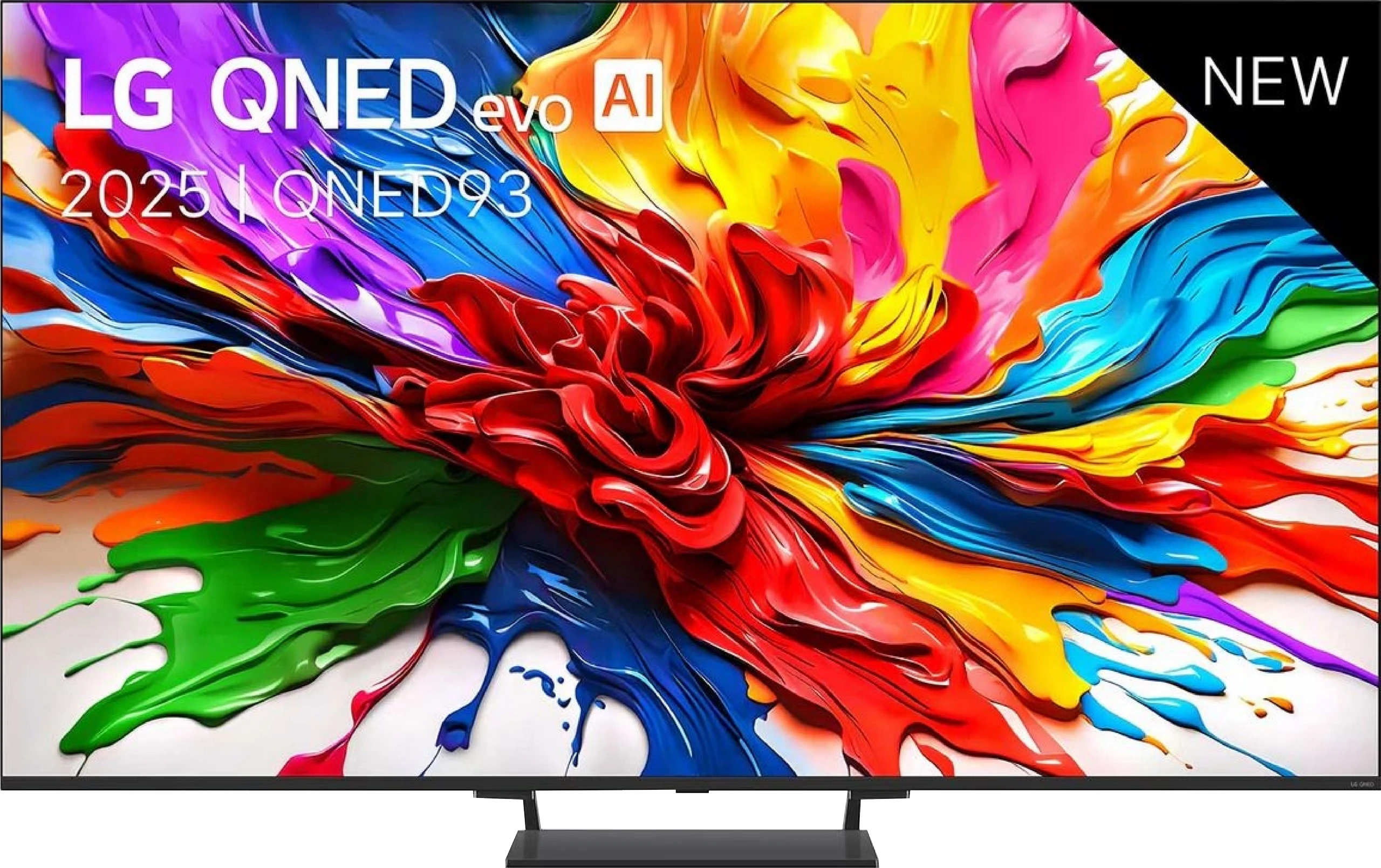
Panel type: WRGB OLED
Resolution: 3840x2160
System: Amazon FireTV
Model year: 2024
Complete the survey to find out the result

Panel type: LCD VA
Resolution: 3840x2160
System: WebOS
Model year: 2025
Complete the survey to find out the result

Overall rating
8.3
7.3
Movies and series in UHD quality
8.7
6.8
Classic TV, YouTube
9.0
6.9
Sports broadcasts (TV and apps)
8.9
6.9
Gaming on console
9.6
8.6
TV as a computer monitor
8.6
8.6
Watching in bright light
6.2
6.2
Utility functions
7.0
8.2
Apps
6.1
9.1
Sound quality
8.7
6.9
Complete the survey to find out what fits your preferences
Advantages
Great picture quality: Thanks to OLED technology with MLA, the image offers deep blacks and infinite contrast
Impressive HDR: Brightness of 1760 nits, support for Dolby Vision and HDR10+
Colour reproduction after calibration is truly reference quality
Excellent viewing angles
144 Hz and gaming features: Support for ALLM, VRR
Low input lag
Built-in soundbar with Dolby Atmos: Delivers spatial and dynamic sound
Support for user functions: USB recording, AirPlay, PiP and Miracast
Pretty good contrast
High number of dimming zones
Good HDR brightness (around 1400 nits)
Wide colour gamut coverage (around 96% DCI-P3)
144 Hz mode and a full set of features for gamers (HDMI 2.1, VRR, ALLM, G-Sync, FreeSync, HGiG, Game Bar)
Low input lag (7 ms at 120 Hz)
Good compatibility with PC, including 144 Hz and clear fonts
WebOS with a rich selection of apps and voice control
Magic remote
Quite effective upscaling and image processing tools - works great for older content like free-to-air TV or YouTube
Disadvantages
Local dimming algorithms need refinement
Very average viewing angles
Dolby Vision does not bring a noticeable improvement over HDR10
Our verdict
LG QNED93A is a television that at first glance appears to be a solid step forward compared to previous LCD models from this brand. On paper, we get a lot: significantly more dimming zones, 144 Hz refresh rate for gamers, support for all HDR formats, including Dolby Vision, and WebOS with a new Magic remote, which remains one of the most user-friendly control systems. The QNED93A shines most brightly in gaming applications. Four fully-fledged HDMI 2.1 ports allow you to connect consoles and computers without any limitations, and the low input lag is maintained at both 120 and 60 Hz. For PC gamers, an additional advantage will be the 144 Hz mode and full compatibility with G-Sync and FreeSync. So it can confidently be said that in terms of features for gamers, the QNED93A doesn't have any complexes compared to the competition. Another strong point is WebOS. LG's system has been regarded for years as one of the most user-friendly in everyday use, and this is confirmed here. Everything is clear, and the Magic remote allows you to operate the TV like a mouse pointer – quickly and intuitively. Brightness is also a plus. At its peak, it managed to achieve results close to 1400 nits. This is enough for the image to not wash out in brighter rooms and for special effects in movies or games to look convincing. The image processor handles upscaling older content well – television or films in lower resolutions appear clearer and sharper than on many competing screens.
However, it cannot be hidden that the biggest problem with the QNED93A is the local dimming algorithms. In scenes full of blacks, the screen can darken significantly, causing many details to simply vanish. The effect is such that the contrast looks better at first glance, but at the cost of information that should be visible. An additional problem is the Dolby Vision mode, which usually improves certain aspects of screens, but in this case changes very little. The differences between dynamic and static metadata have to be literally searched for with a magnifying glass. This is simply disappointing because the hardware's number of dimming zones and stronger backlighting provide the basis for a better effect. So who is the LG QNED93A for? It is a television that will work excellently as a home entertainment centre, especially if you’re thinking about gaming on consoles or PCs. In everyday watching of TV and films in well-lit conditions, it will also provide a lot of satisfaction thanks to its high brightness and decent image processor. However, one must accept that in scenes with a lot of black and full utilization of HDR, this model does not measure up to its competitors. LG has shown that it can create a very solid LCD screen, but it is also evident that not everything has been refined as it has in their OLED televisions.
TV appearance




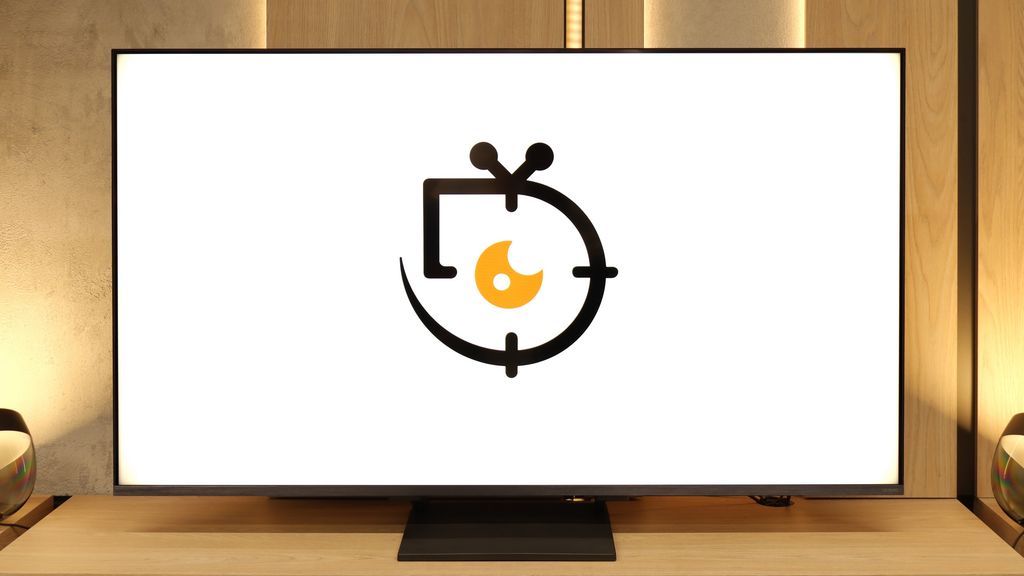
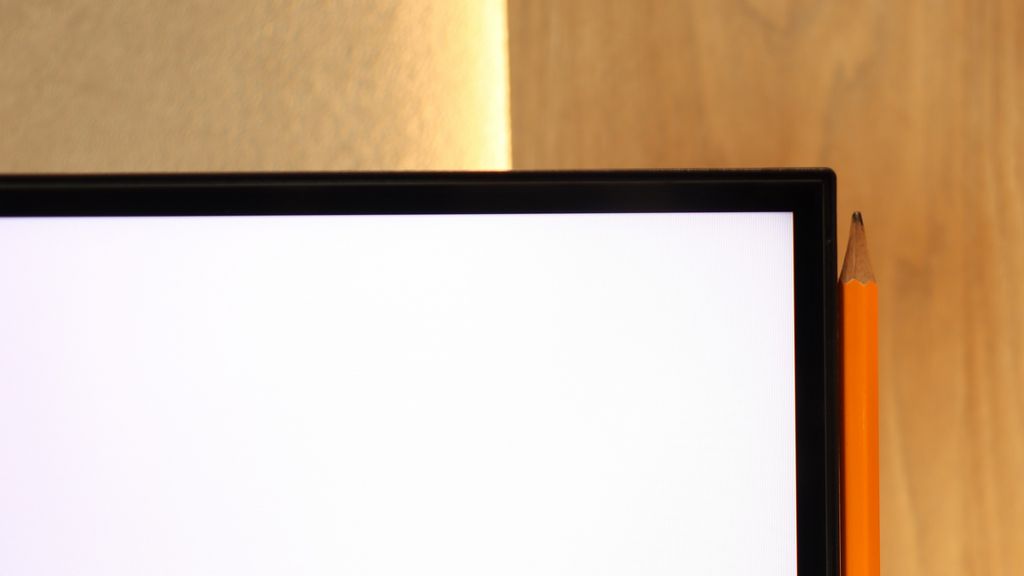
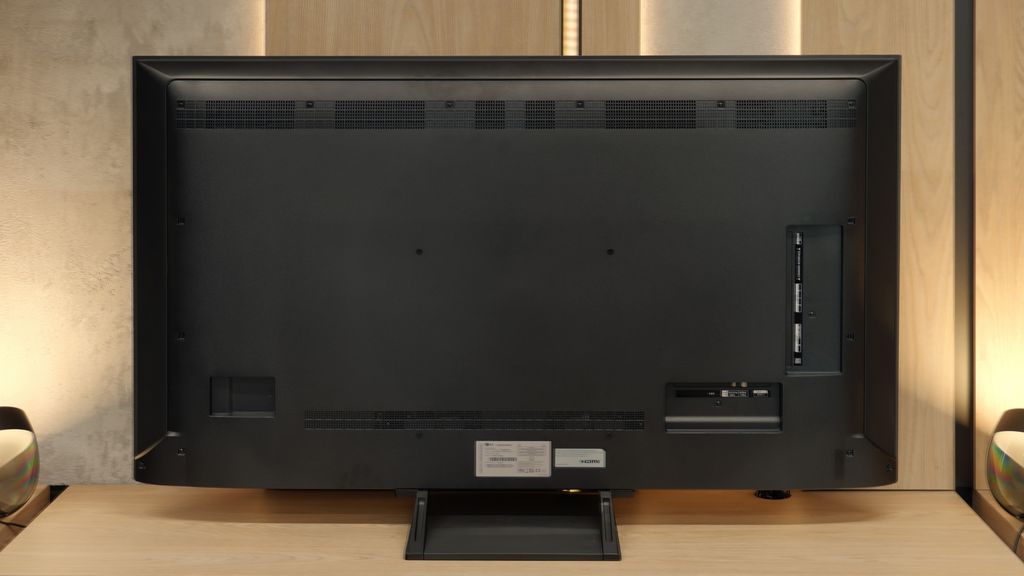
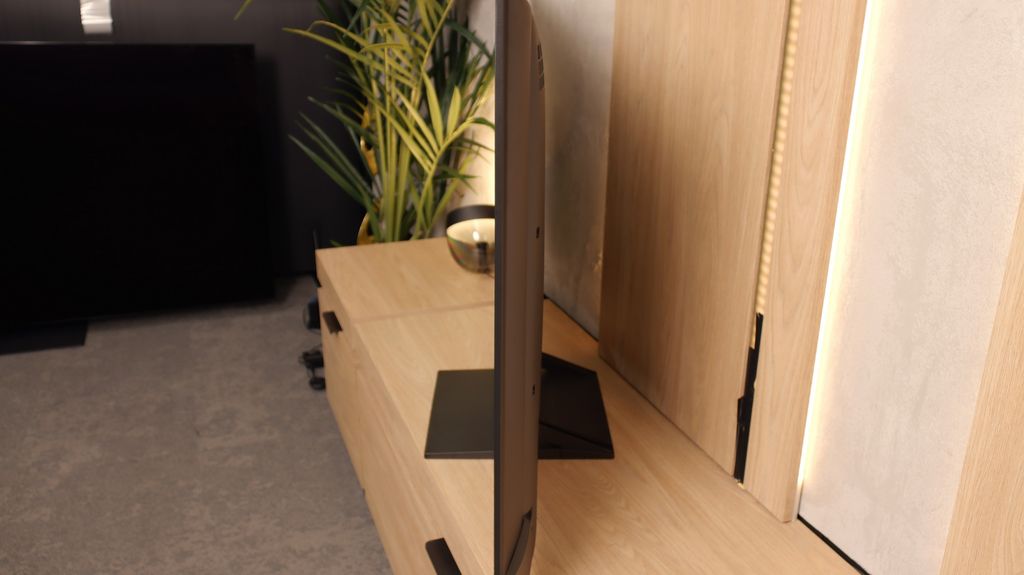
Contrast and black detail
10/10
7.3/10
Local dimming function: Yes, number of zones: 308 (14 x 22)
Contrast:

Result
∞:1

Result
∞:1

Result
∞:1

Result
∞:1

Result
∞:1

Result
130,500:1

Result
30,950:1

Result
15,250:1

Result
6,750:1

Result
4,600:1
Halo effect and black detail visibility:

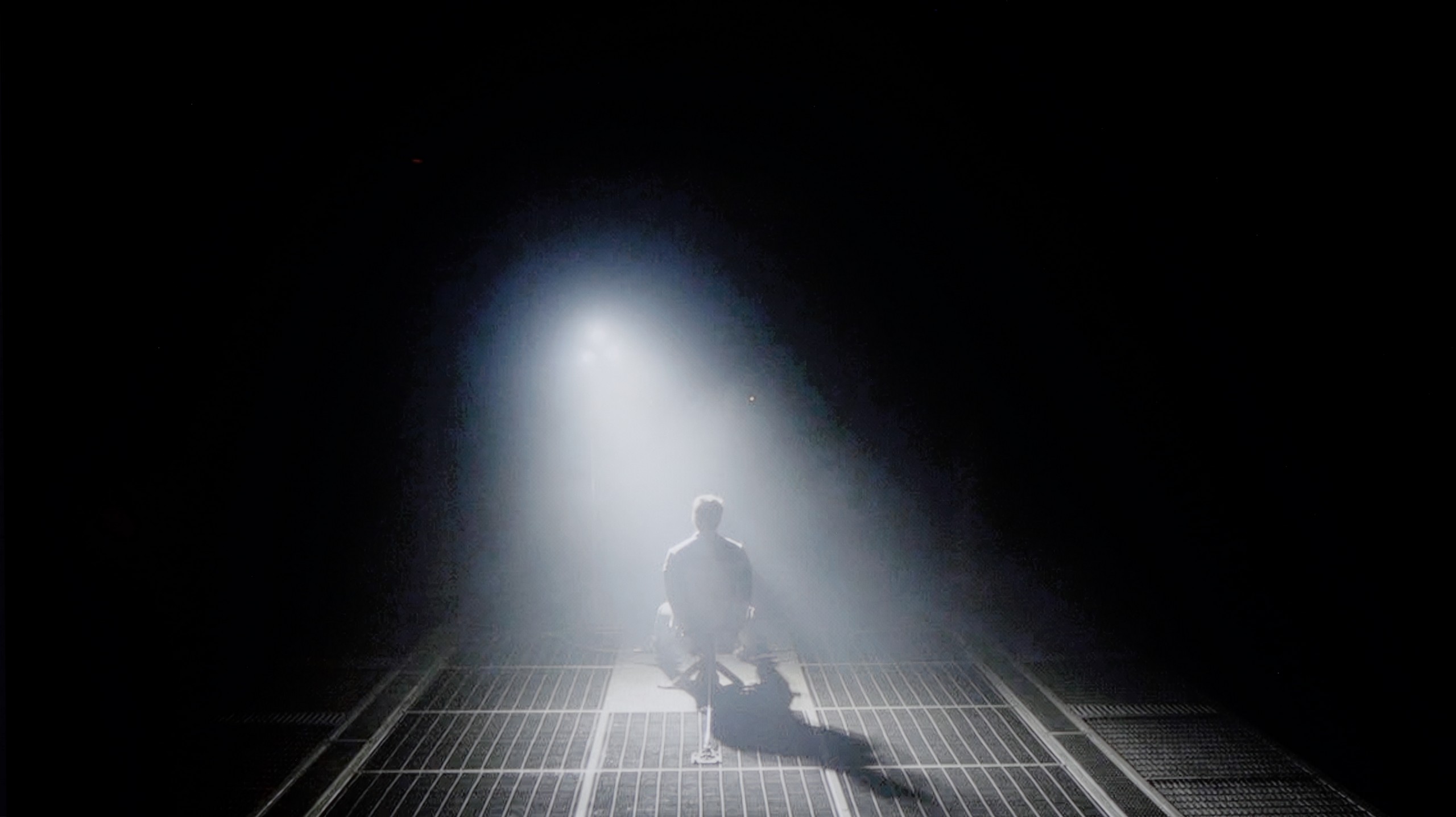
The contrast and black levels in the television Panasonic Z95A are at a level that captures the attention of even the most discerning viewers. The Z95A, as befits an OLED, delivers outstanding performance in this area. In every test scene, the contrast is practically infinite, resulting in excellent image quality under real-world conditions. During the screening of the film Oblivion, you can see how light sources, such as lamps, fall on the actor, creating an incredibly realistic effect. The Z95A Panasonic reproduces these details in black with impressive precision, ensuring that even subtle differences in brightness and lighting are clear. This gives viewers a sense of depth and naturalness in the picture, which is hard to find in LED televisions that often offer various compromises.
We took a close look at the 55-inch version of the LG QNED93A, featuring a high-contrast VA panel. However, for Mini-LED TVs, it’s not just the panel itself but primarily the number and performance of the local dimming zones that determine the final effect. In this model, we counted an impressive 308 zones right off the bat. In comparison, last year’s QNED91T in the 65-inch variant had only about 160. The difference is huge and shows that LG has made a significant step forward in this technology. On paper, it looks great, but in practice, enthusiasm quickly cools. The contrast in the QNED93A can indeed be impressive – bright elements are clearly separated from the blacks, and in many scenes, the depth effect is a real delight for the eyes. The problem is that despite such a significant improvement in the backlighting design, the results aren’t much better than last year’s model. The algorithms controlling the dimming can be overly aggressive. This is especially evident in darker sequences, where the screen dims to the point that subtle details vanish from view. Many viewers will appreciate the stronger blacks, but it’s hard to ignore that this comes at the expense of the director's intentions. The most problematic scenes turn out to be those with many small, bright elements. It is precisely then that the typical halo effects, or luminous halos, associated with LCDs and local zone dimming appear around them. While this phenomenon doesn’t completely ruin the experience, it serves as a reminder that even with an increased number of zones, local dimming still has its limitations. Ultimately, the contrast in the QNED93A can be considered good, but we feel that the manufacturer didn’t put in enough effort in optimising the new model in terms of blacks and contrast.
HDR effect quality
8.3/10
5.8/10
Luminance measurements in HDR:

Result
1667 nit

Result
1738 nit

Result
1792 nit

Result
1798 nit

Result
999 nit

Result
1330 nit

Result
219 nit

Result
678 nit

Result
160 nit

Result
1016 nit
Scene from the movie “Pan” (about 2800 nits)


Scene from the movie “Billy Lynn” (about 1100 nits)

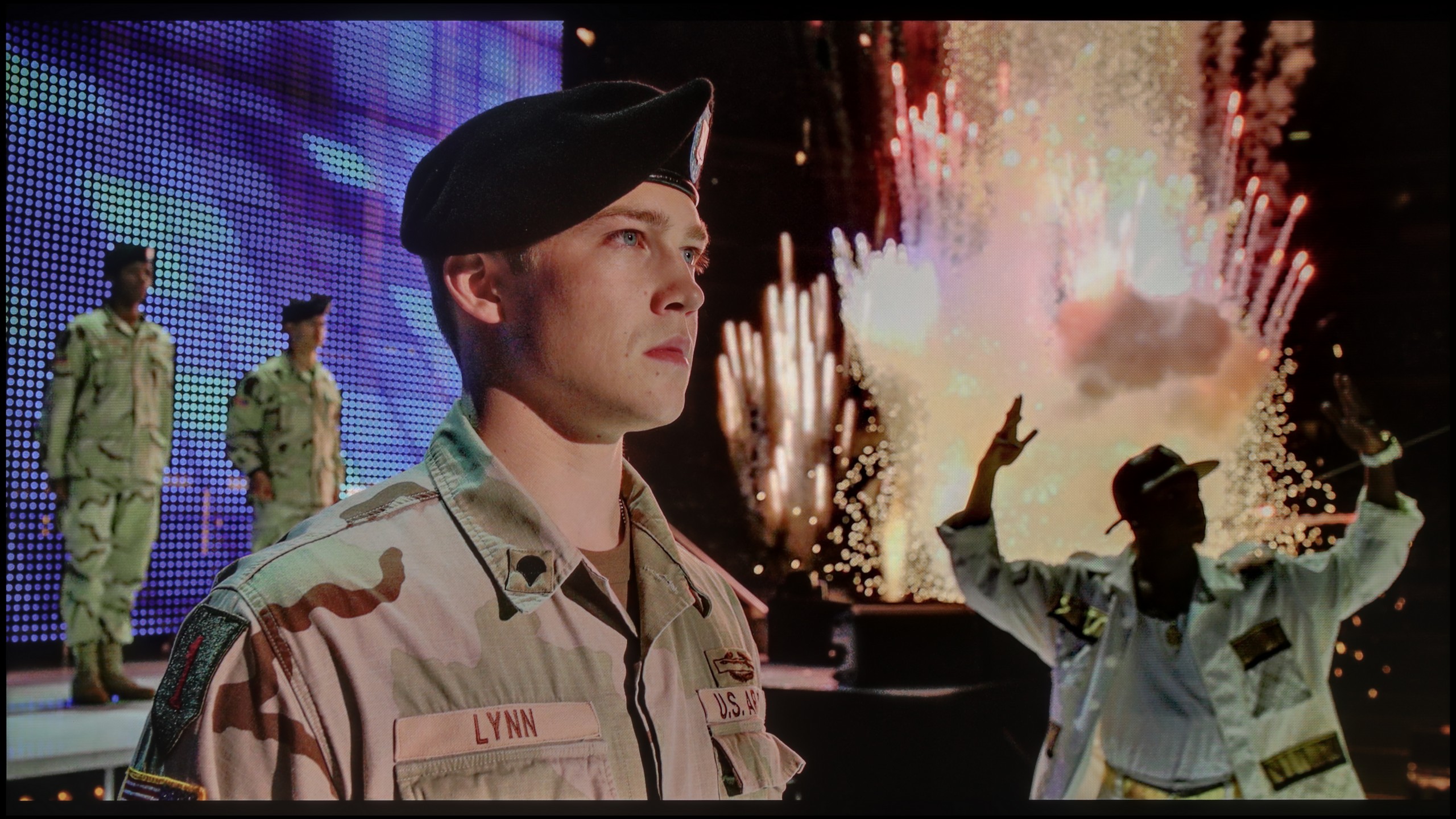
Static HDR10


Dynamic: Dolby Vision
Dynamic: Dolby Vision


HDR luminance chart:
LG QNED93A / QNED90A
HDR luminance
Panasonic Z95A
HDR luminance
Luminance of RGB colors
Panasonic Z95A shows class when it comes to HDR performance. In luminance tests, it achieves a level of 1800 nits, which has a real impact on movie watching. Scenes from Life of Pi or Gemini Man look fantastic – the television effortlessly reproduces details and the intensity of bright spots, making a strong impression with its power. In more demanding moments, like the final scene from The Meg, you can see how bright light floods the screen. In such moments, brightness drops, which is typical for organic panels. Nevertheless, a result around 1000 nits can still be considered excellent, still providing very good picture quality. Additionally, the television offers great coverage of wide colour gamuts – up to 98.6% for DCI-P3 and 74.5% for BT.2020. This means that colours are not only vibrant but also deeply saturated, allowing full appreciation of the richness of details, especially in HDR scenes. Such coverage makes colours look more realistic, and the HDR effect gains intensity and accuracy. All this impressive HDR effect is thanks to MLA technology, which enables such high luminance and excellent image detail. With it, the Panasonic Z95A offers HDR at a level that truly makes a difference.
Although the number of local dimming zones in the LG QNED93A hasn’t directly translated to noticeably better contrast, it’s hard to deny this model one thing – it’s brighter than its predecessor. In synthetic tests, we recorded values around 1400-1500 nits, and more importantly, these results are reflected in real film scenes. In full-screen sequences flooded with whites or bright lights, the screen was able to maintain high luminance, providing a truly decent amazing HDR effect. Unfortunately, where the TV could show true class, that is in scenes requiring precision, all the magic dissipates. The dimming algorithms we mentioned earlier operate aggressively enough that small, bright objects – like distant lights, stars, or the moon – can almost completely disappear. Just look at the test scenes from the film Pan or Sicario 2 (screens 2 and 4) to see how subtle details are dimmed to the limits of their visibility. It’s a pity because a greater number of zones could theoretically translate to significantly better performance. Fortunately, there are also strong points. The QNED93A performs well in terms of colour gamut coverage, achieving around 96% of the DCI-P3 standard. As a result, colours in films look rich and full, and the image doesn’t lose intensity even in more demanding scenes. So, it can be said that the HDR in this model is solid, although the underdeveloped local dimming algorithms hinder its full potential.
Factory color reproduction
8.3/10
6/10


Factory Mode
After calibration
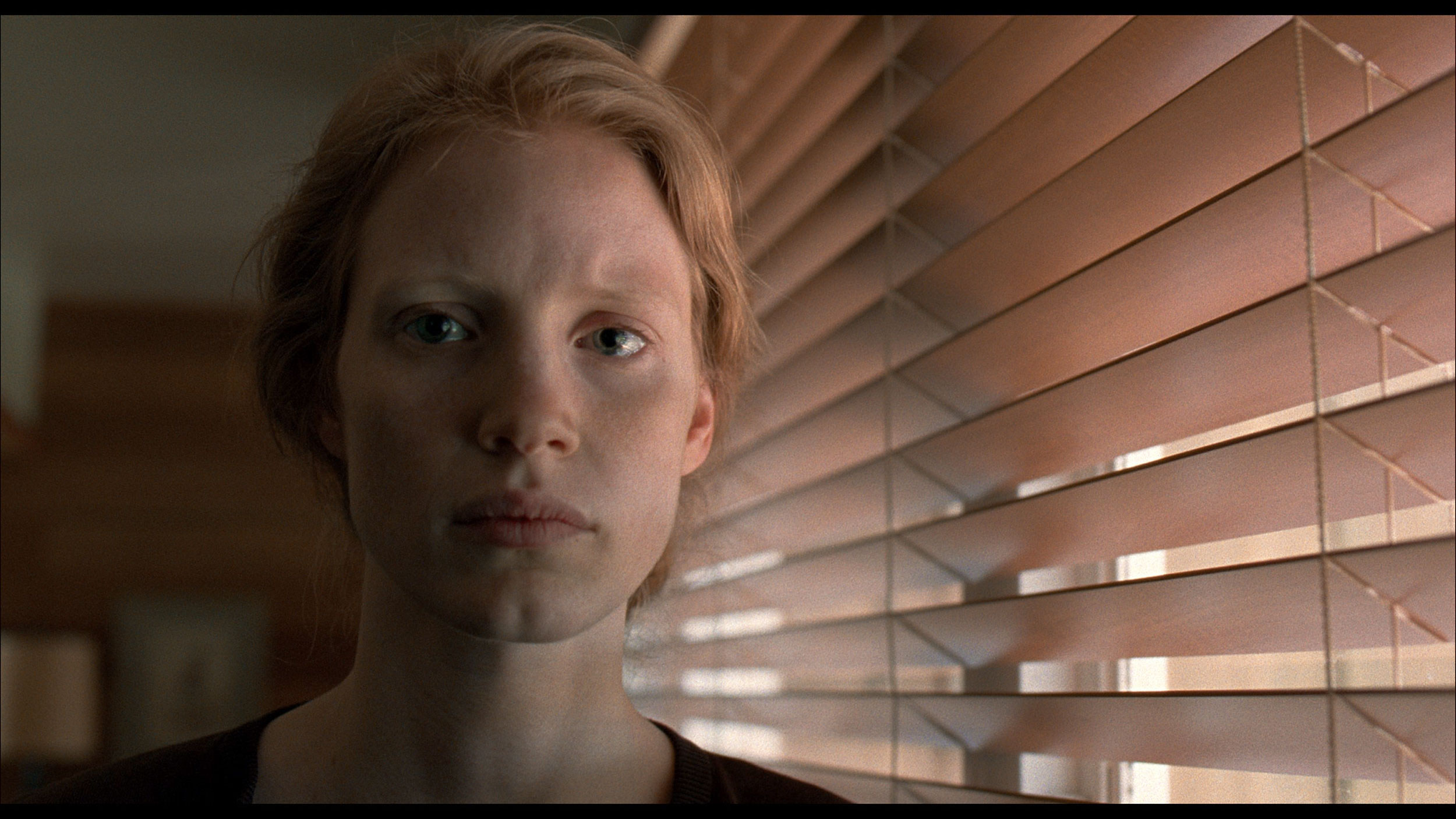
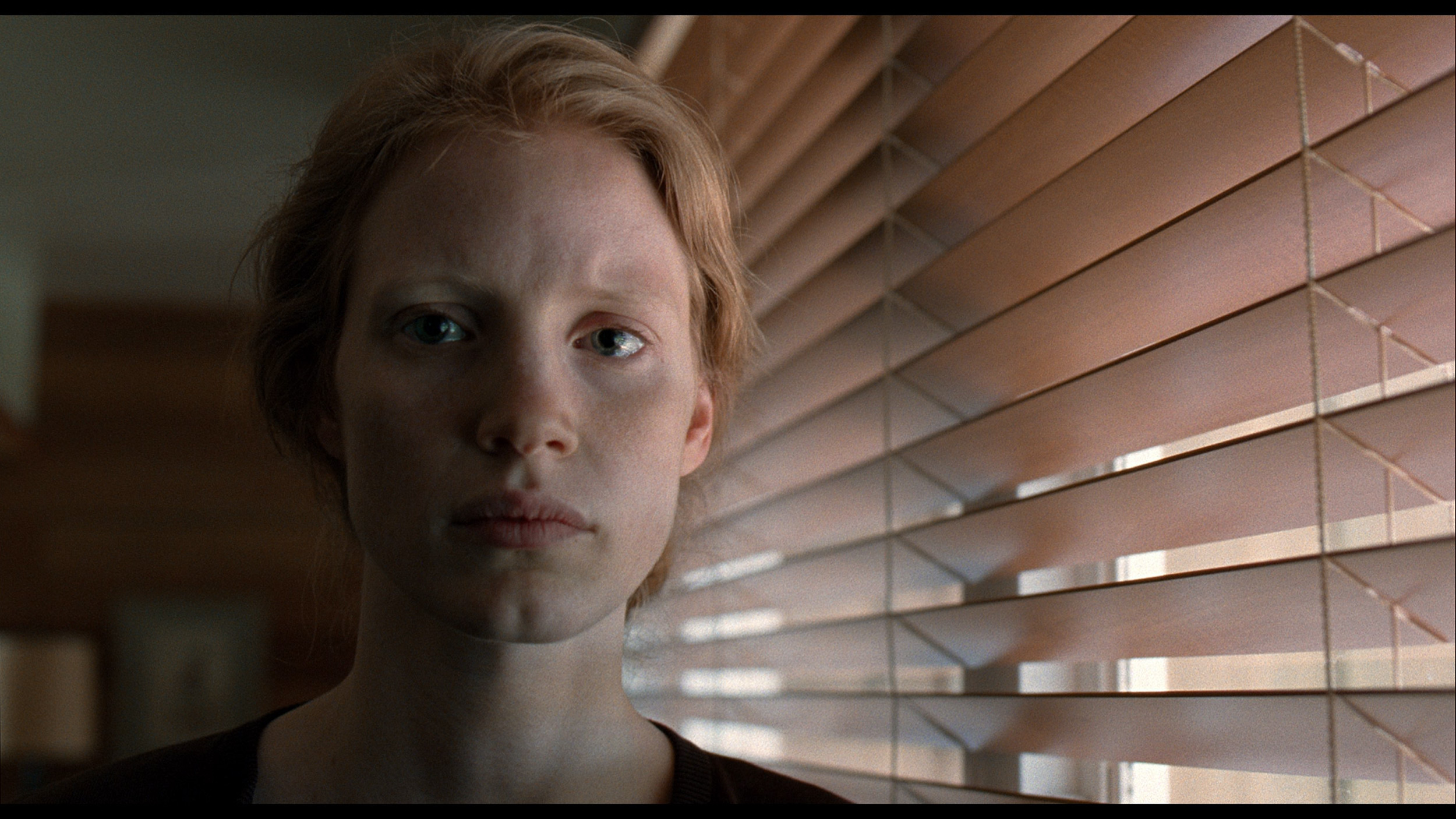
Factory Mode
After calibration
The best picture mode on the Panasonic Z95A is undoubtedly the Filmmaker mode. This mode offers quite good image reproduction, but it is not without certain flaws that need addressing. Primarily, the white balance, for both 4K and HD content, tends to be dominated by red and blue hues. This leads to a slight pink tint in the image, particularly noticeable in bright, white scenes. Such discrepancies can be seen in the comparative image below, which illustrates the issue well. The Colour Checker test also confirms these inaccuracies, showing slight shifts of dots towards the mentioned shades.
In terms of gamma brightness characteristics, it performs very well, with only minor issues when brightening small details. A greater challenge arises with the EOTF curve, which is responsible for controlling brightness in 4K HDR content. Here, there is a slight boost in brightness above the reference value, which sometimes makes the image overly bright, especially in more demanding scenes. While the Filmmaker mode is definitely the best choice on the Z95A, these aspects require refinement to fully harness the television's potential.
In film mode (more specifically Filmmaker), the colour reproduction in the QNED93A was relatively accurate, although there were some reservations. In SDR content, the white balance leaned towards warmer tones, resulting in a slight yellowing across the entire screen. Gamma, on the other hand, led to a slight lightening of the image, making it look a bit less natural, especially in scenes that required precise shading (this is evident in the comparison photo). This isn't a problem that immediately stands out to every viewer, but more discerning individuals may feel that the image deviates from the intended aesthetic of the filmmakers. In HDR materials, the situation looked a bit different. The white balance here was quite good, ensuring that whites did not take on pink or unwanted green hues. However, the brightness management turned out to be an issue. An analysis of the EOTF curve revealed that at certain moments, the television could be distinctly too dark where it shouldn't be, losing some details and lowering the realism of scenes. This detracted from the HDR effects, which were theoretically meant to be the most impressive. For this reason, we decided to conduct a calibration.
Color reproduction after calibration
9.4/10
7.8/10




After calibration, Panasonic Z95A showcases its full potential, delivering an almost perfect image. The television offers extensive adjustment capabilities, which we have fully utilised. The white balance post-calibration is absolutely flawless, and the errors in SDR content at 0.5 are at an exceptionally reference standard. The same goes for 4K HDR content – the screen tint has been completely eliminated, and the white balance is now exemplary.
The colour palette and Colour Checker test confirm the excellence of the calibration. Errors below 2 are a result that will satisfy both professional calibrators and cinema-quality image enthusiasts. Significant changes have also occurred in the brightness characteristics – the EOTF curve has been aligned, eliminating previous issues with excessive brightness. Additionally, a small error in gamma has been reduced.
Before calibration, the image was acceptable, but now it's in a completely different league. It's a true feast for the eyes, and the quality is hard to compare to anything else. Once fine-tuned, the Panasonic Z95A becomes a true master of colour reproduction.
After professional calibration, the Filmmaker mode in the QNED93A has improved primarily where it matters most in everyday use. We managed to straighten the white balance and eliminate the yellowish tint in SDR content, which is what we watch most often – television, streaming services, or standard quality movies. As a result, the colours look natural and pleasant, making the overall viewing experience significantly more comfortable. In HDR mode, we also made corrections, but here the biggest issue turned out to be the EOTF curve. Although LG provides some leeway in the settings, the television still controls brightness on its own terms. It's clear that the local dimming algorithms are not fully refined and can ruin the viewing experience by dimming parts of the picture at inappropriate moments. Nevertheless, it’s worth opting for calibration of this model, especially the mode intended for everyday viewing.
Smoothness of tonal transitions
6.5/10
8/10

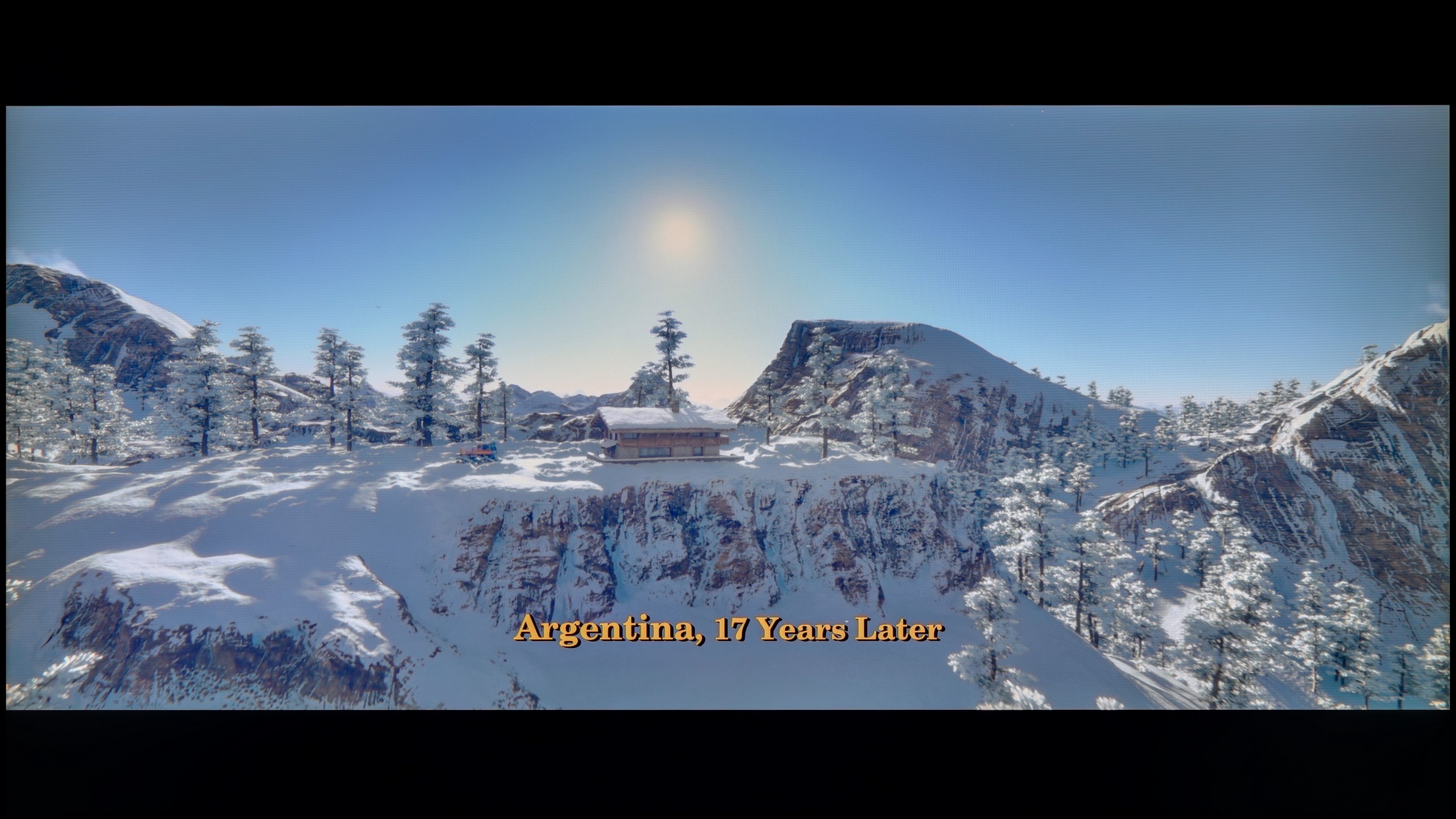



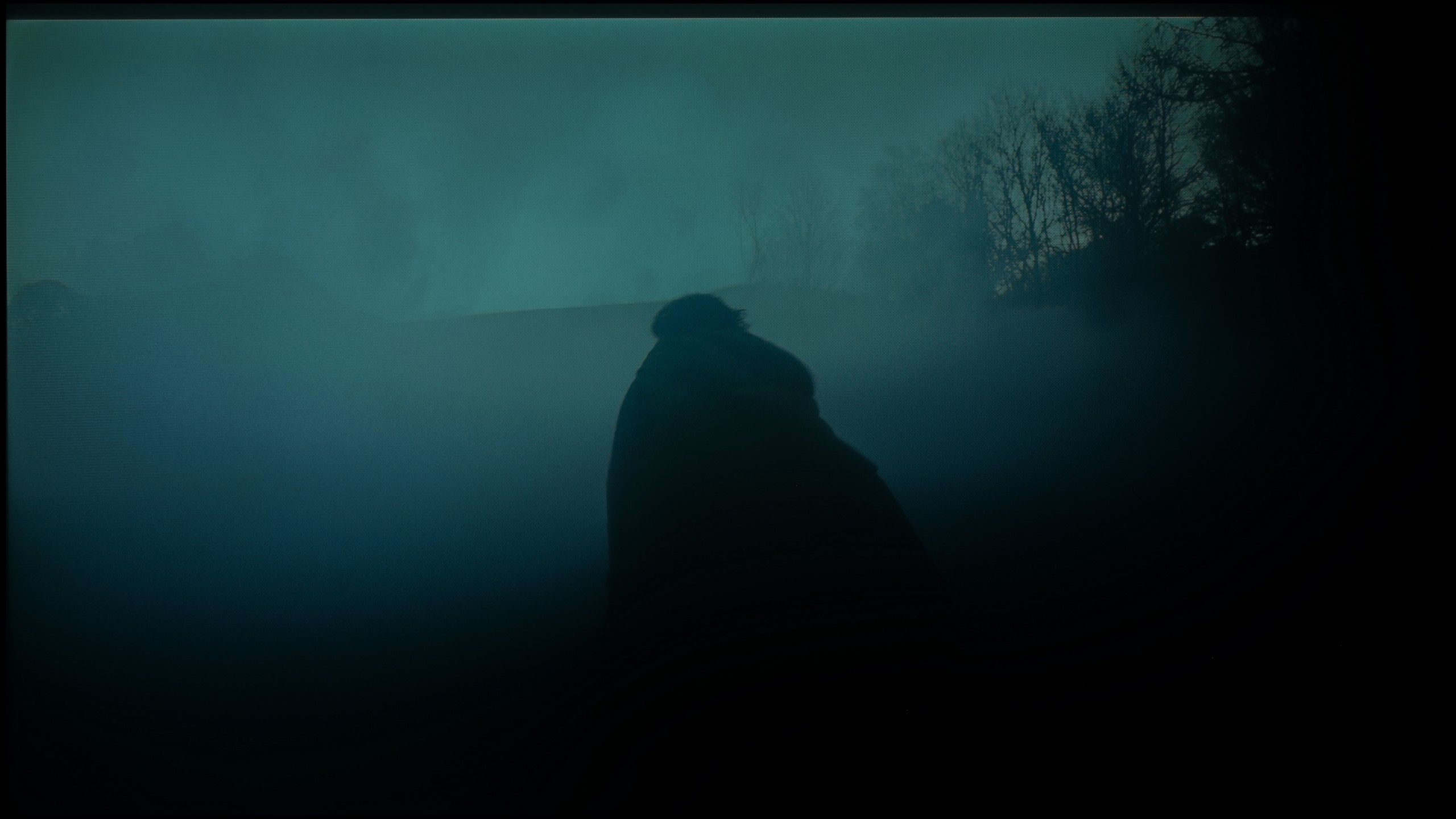

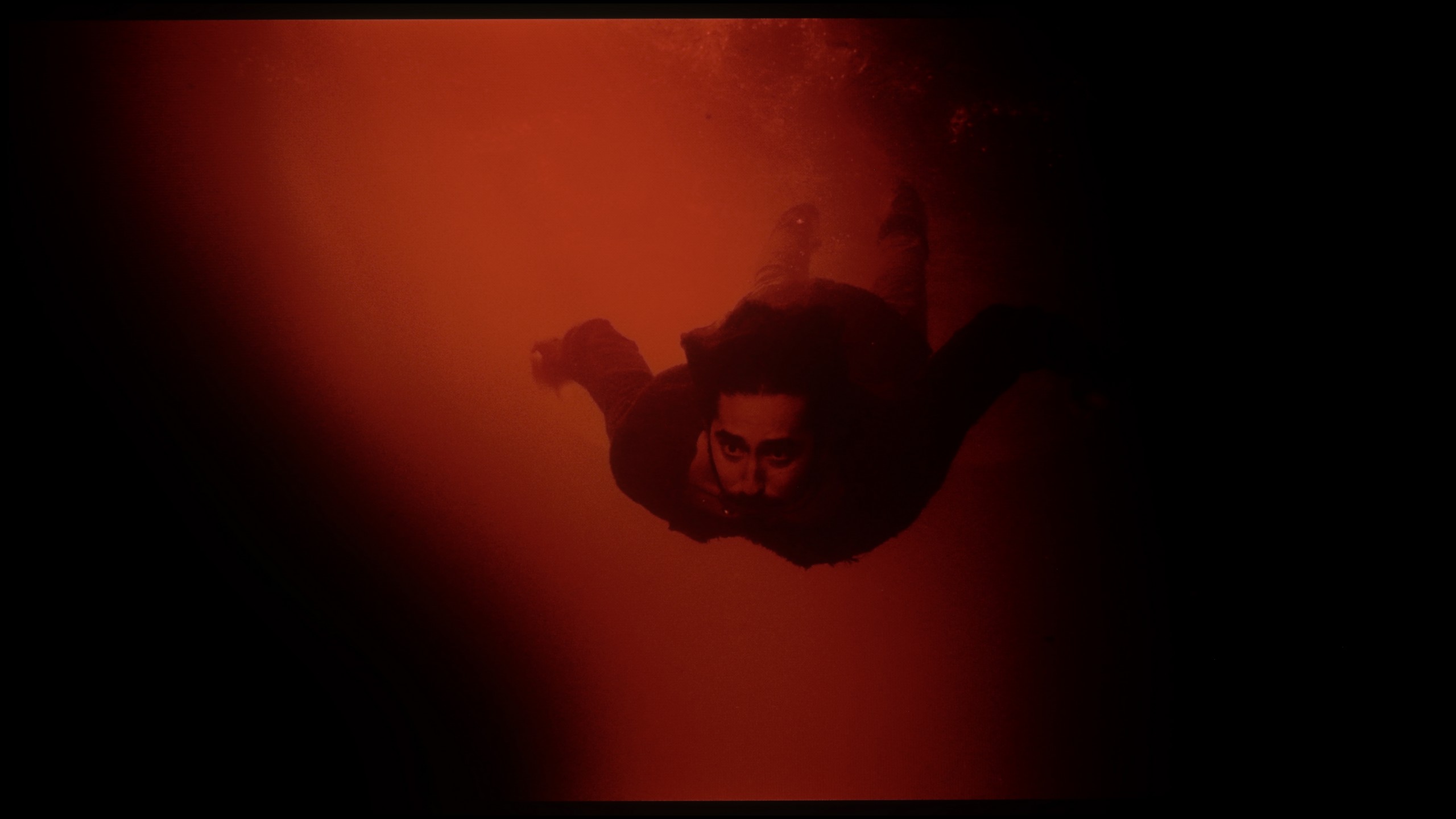




The tonal transitions in Panasonic Z95A are not terrible, but in this class of devices, you can expect more. The television struggles with smoothly blending colours, both in dark and light shades. In more demanding scenes, minor imperfections are noticeable, which can affect the visual experience, especially for more discerning users. While this is not a disqualifying factor, it is an aspect that requires improvement, especially considering the price and aspirations of this model.
The smoothness of tonal transitions in the LG QNED93A is really impressive. In most scenes, there are no visible artificial colour banding or posterisation effects. Dark scenes, in particular, are surprisingly good – many TVs struggle in these, but here the image remains smooth and consistent. In brighter sections, one can notice some slight colour blending, but it’s not pronounced enough to be distracting. However, during testing, we encountered a noticeable DSE effect, known as “dirty screen.” On our unit, this effect was strong enough that in bright scenes, the corners noticeably darkened, giving the impression of vignetting. This may be a defect of the test unit, but during intensive viewing, it was hard for us to overlook.
Image scaling and smoothness of tonal transitions
7.4/10
7.8/10
Smooth transition function

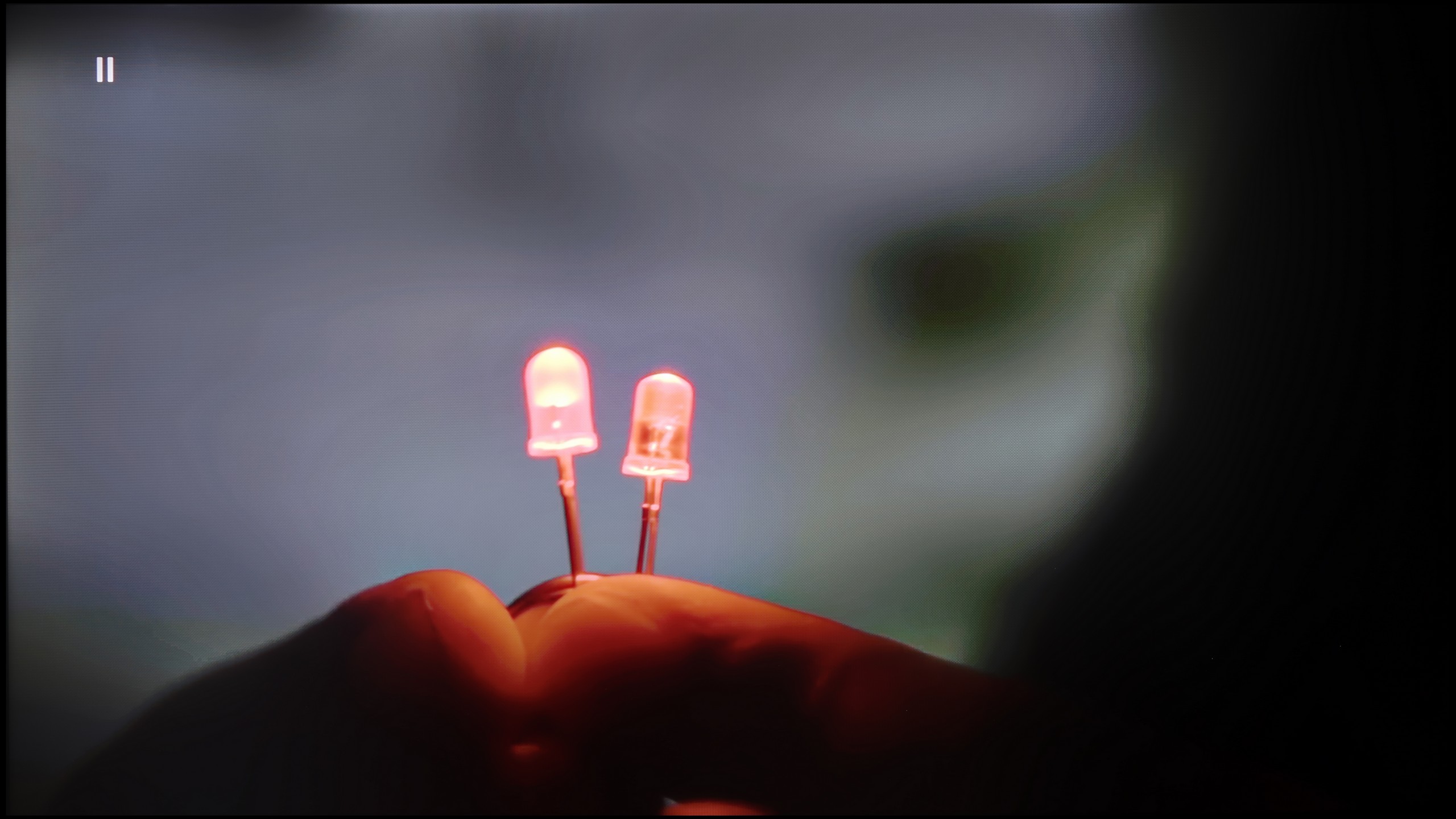
Image without overscan on the SD signal


In the case of lower quality materials, the "Gradation Smoothing" function is responsible for smoothing tonal transitions. The best results are achieved with an intermediate setting – while they are not spectacular, the function works correctly and does not introduce unwanted effects into the image. It can be evaluated as average, but sufficient for improving the quality of tonal transitions.
As for digital processing, or upscaling, the picture looks surprisingly good. It is flexible and pleasant to the eye, which makes lower quality content, such as standard television or YouTube, look quite decent. However, minor issues can be observed, such as "aliasing" on edges, e.g. branches in the background. Nevertheless, this does not significantly affect the overall viewing experience, and the television handles these materials in an acceptable manner.
The LG QNED93A turns out to be a very solid television for everyday use. Its image processor performs excellently with upscaling, making even older films or free-to-air television sharper and more detailed. During the screening of 'The Godfather,' it’s clearly visible how upscaling brings out additional details from the image – the characters’ faces and the texture of their clothing look significantly clearer than in the original material.
The digital image processing also deserves praise. The television is equipped with a function that reduces unwanted colour banding and screen irregularities. It works best in the 'Medium' setting – subtly smoothing tonal transitions without overly interfering with the image. This way, the natural film grain is preserved, and the screen does not appear artificially smooth. Perhaps in some scenes, slight colour banding can still be noticed, but in practice, the effect is more advantageous than with a stronger intervention from the algorithm.
Blur and motion smoothness
8.5/10
7.9/10

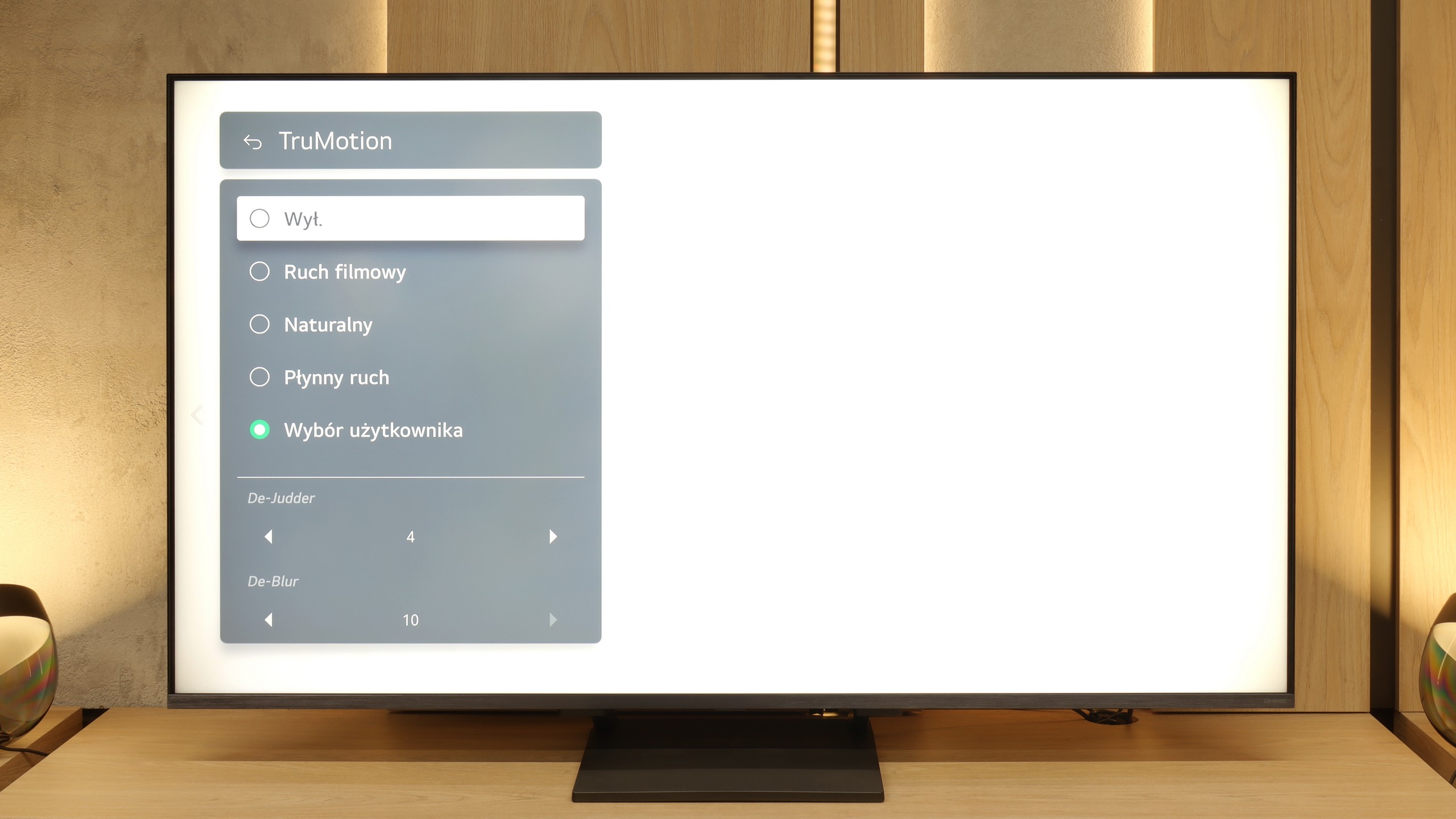
Blur (native resolution, maximum refresh rate):




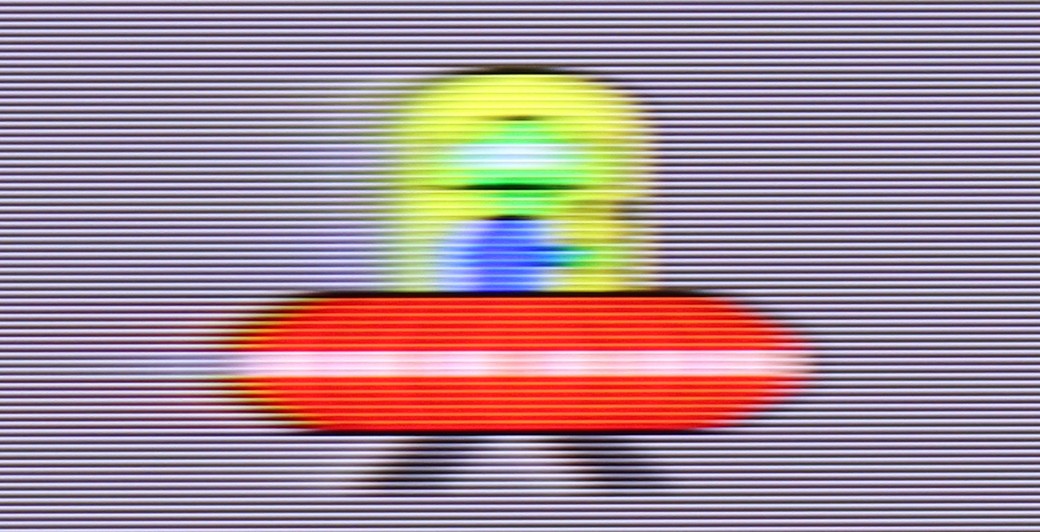
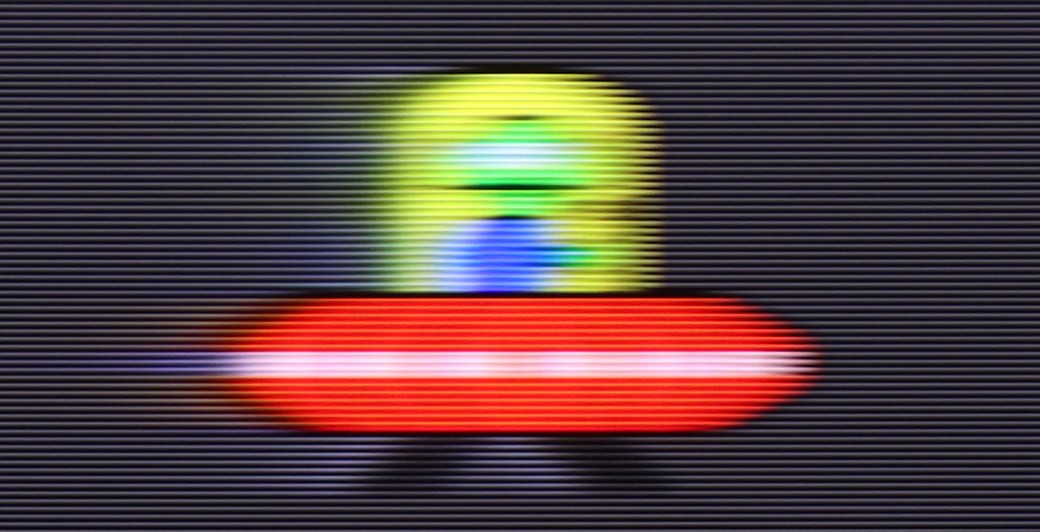
Blur (BFI function enabled):
Image flickers in this mode



Image flickers in this mode



Smużenie ():
Smużenie (4K@144Hz):

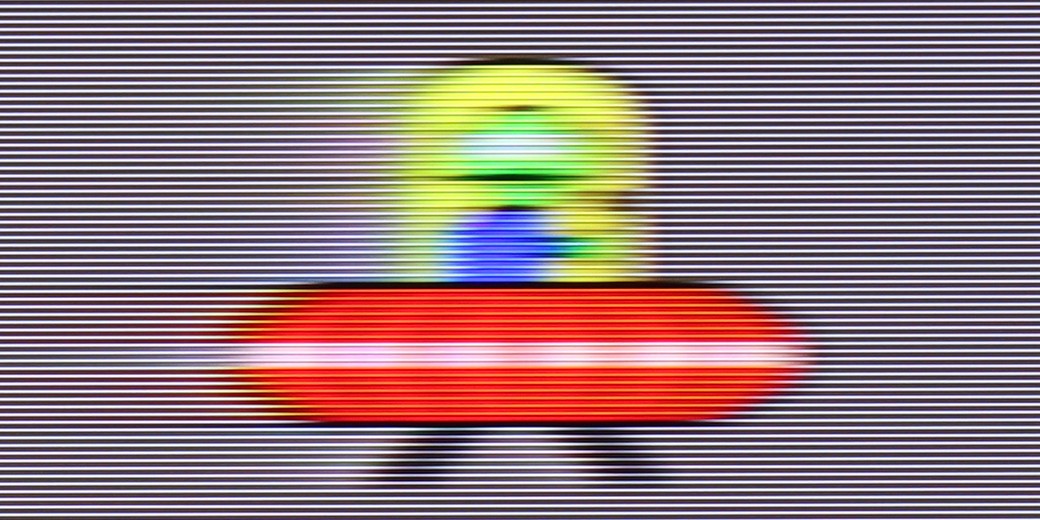
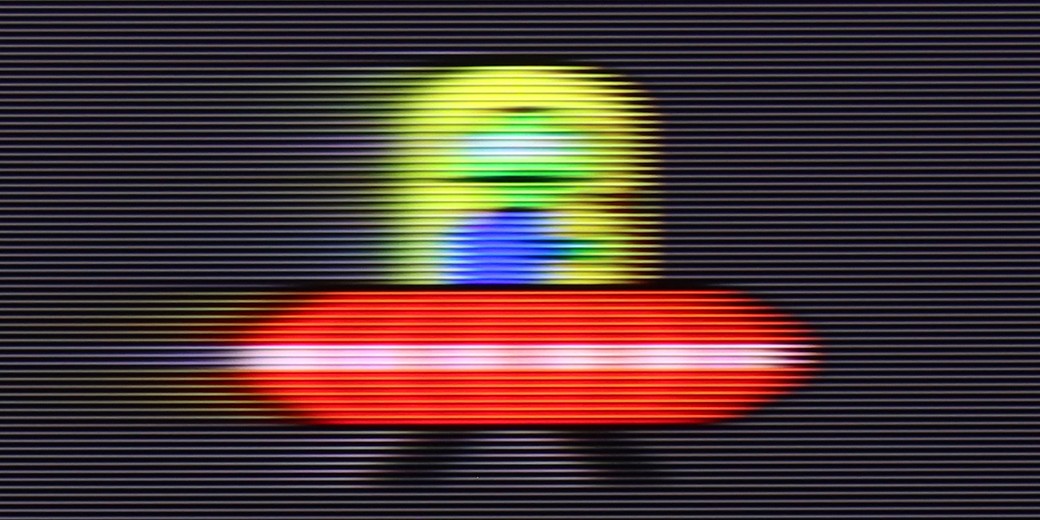
Panasonic Z95A, with a 144 Hz panel, offers excellent image smoothness. For movies, there is an "Intelligent Frame Creation" feature that allows for improved smoothness and reduction of blurring. Users have two sliders at their disposal: "Motion Blur Reduction" – responsible for clearer and sharper details in fast-moving scenes. "Film Smoothness" – adds smoothness by creating additional frames between the originals, making motion appear more fluid and natural with the effect of "soap opera"
As a result, viewers can adjust the settings to their own preferences. Movies and less dynamic content look smooth and natural, which should satisfy most users.
LG QNED93A has been equipped with a 144 Hz panel. This is primarily a nod to gamers, but the fact that higher refresh rates are increasingly appearing in televisions can be viewed positively. In everyday viewing, 120 Hz remains key, and in this regard, the QNED93A performs well. The manufacturer also provides the option to adjust the picture thanks to the TruMotion system – the De-Judder and De-Blur sliders allow you to choose between a cinematic motion feel with visible frames and full smoothing with theatrical motion.
Console compatibility and gaming features
10/10
9.8/10
- ALLM
- VRR
- VRR range40 - 144Hz48 - 144Hz
- Dolby Vision Game Mode
- Correct implementation of HGIG
- 1080p@120Hz
- 1440p@120Hz
- 4K@120Hz
- Game bar

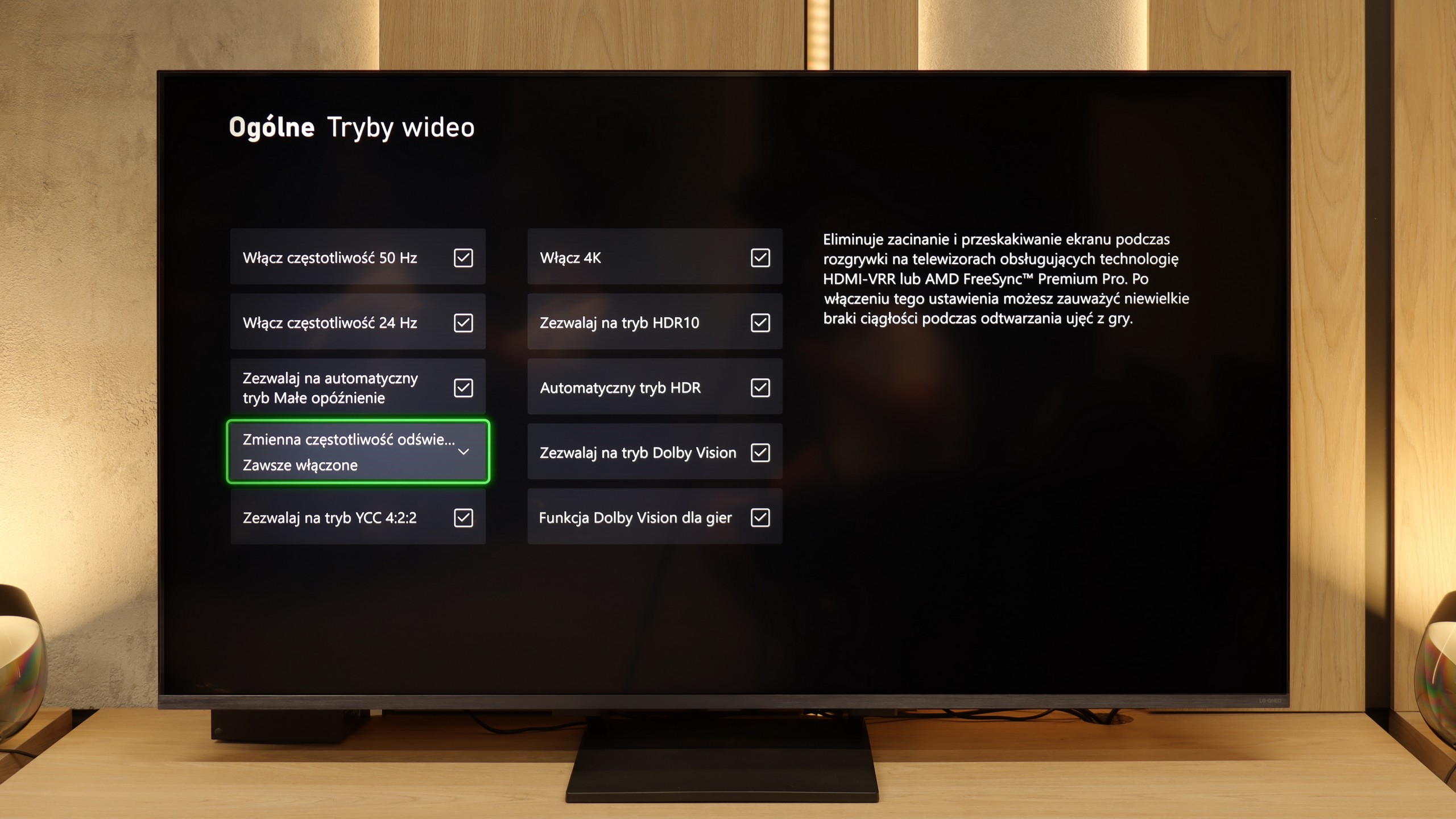

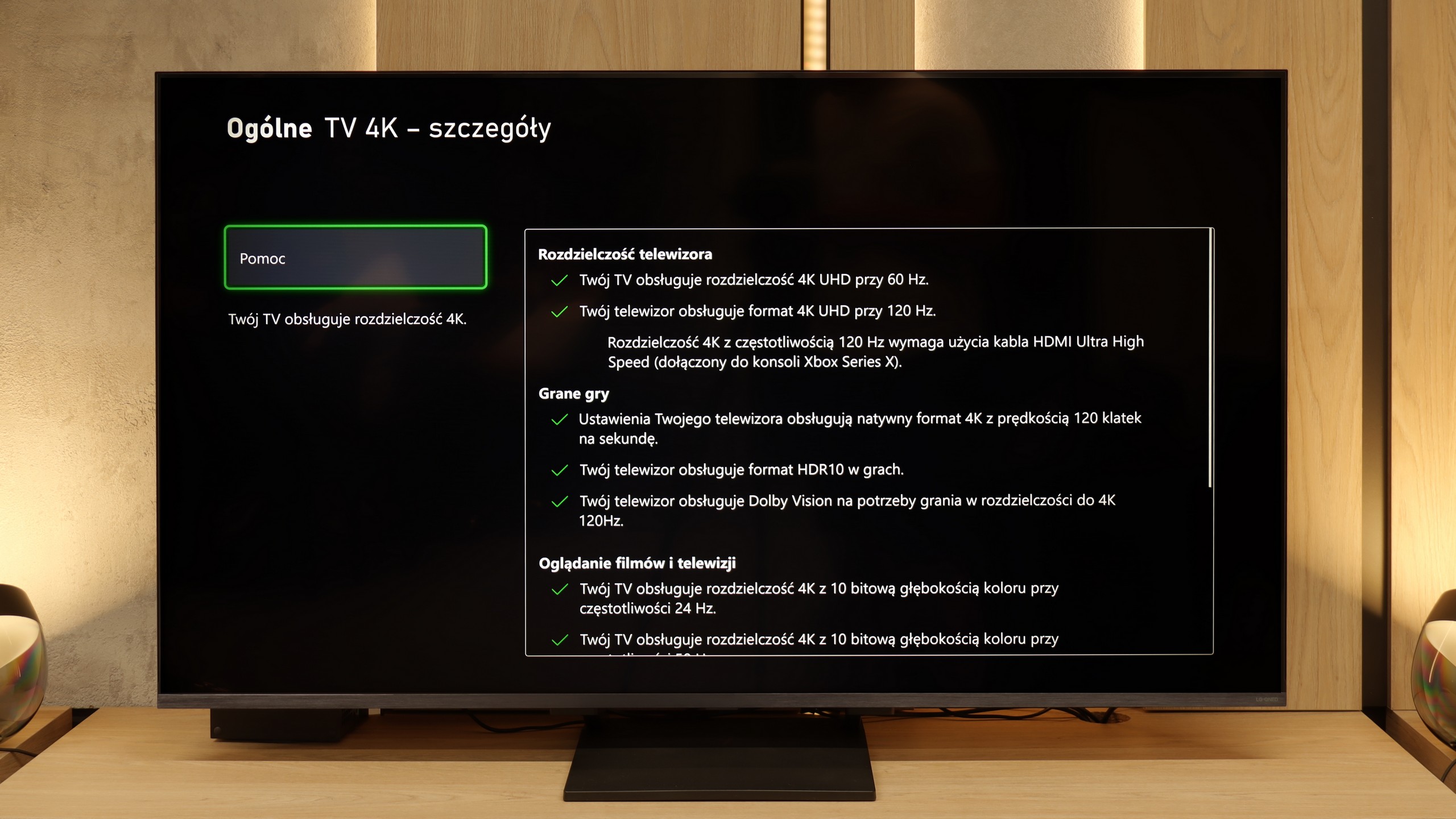

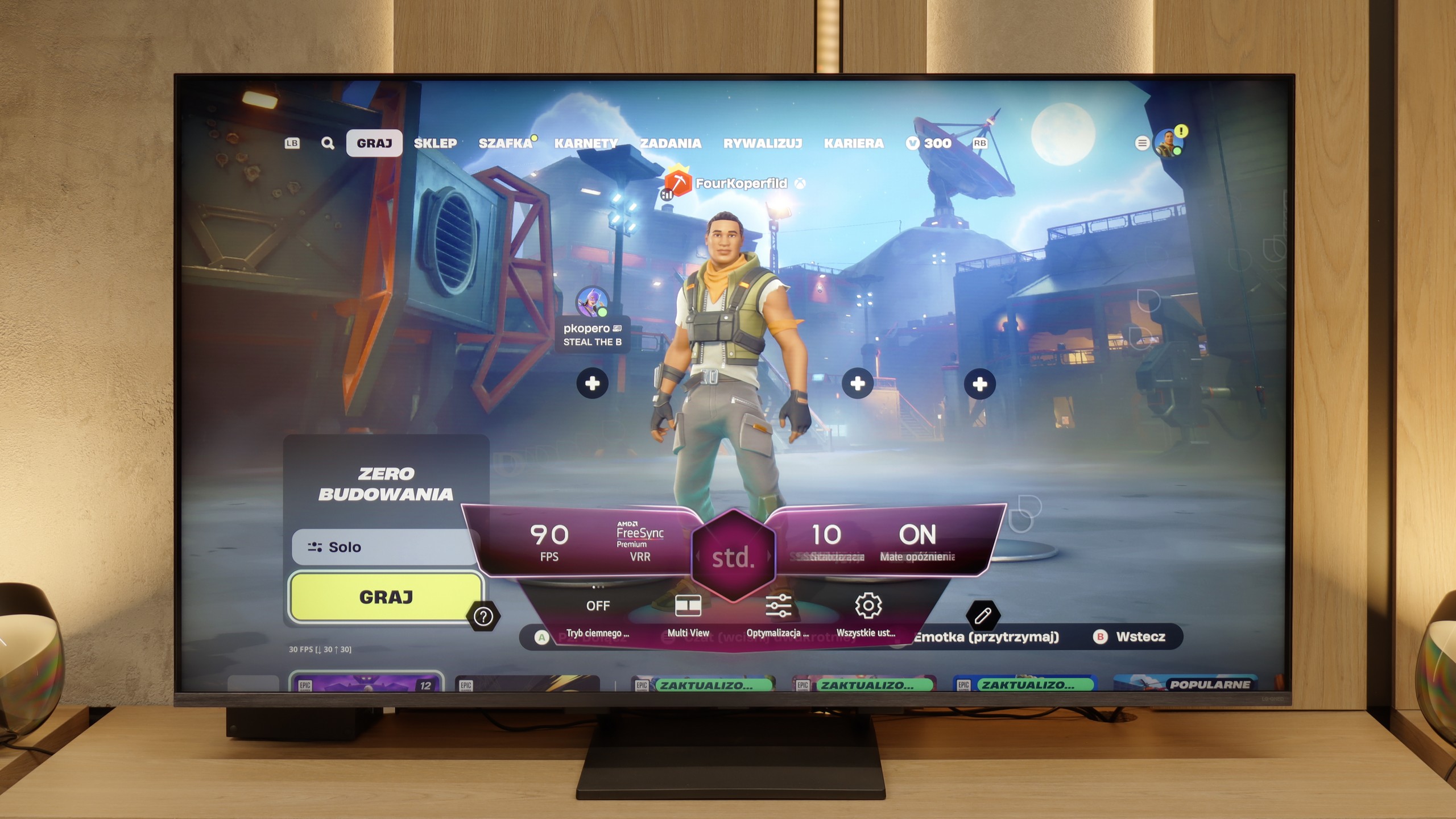

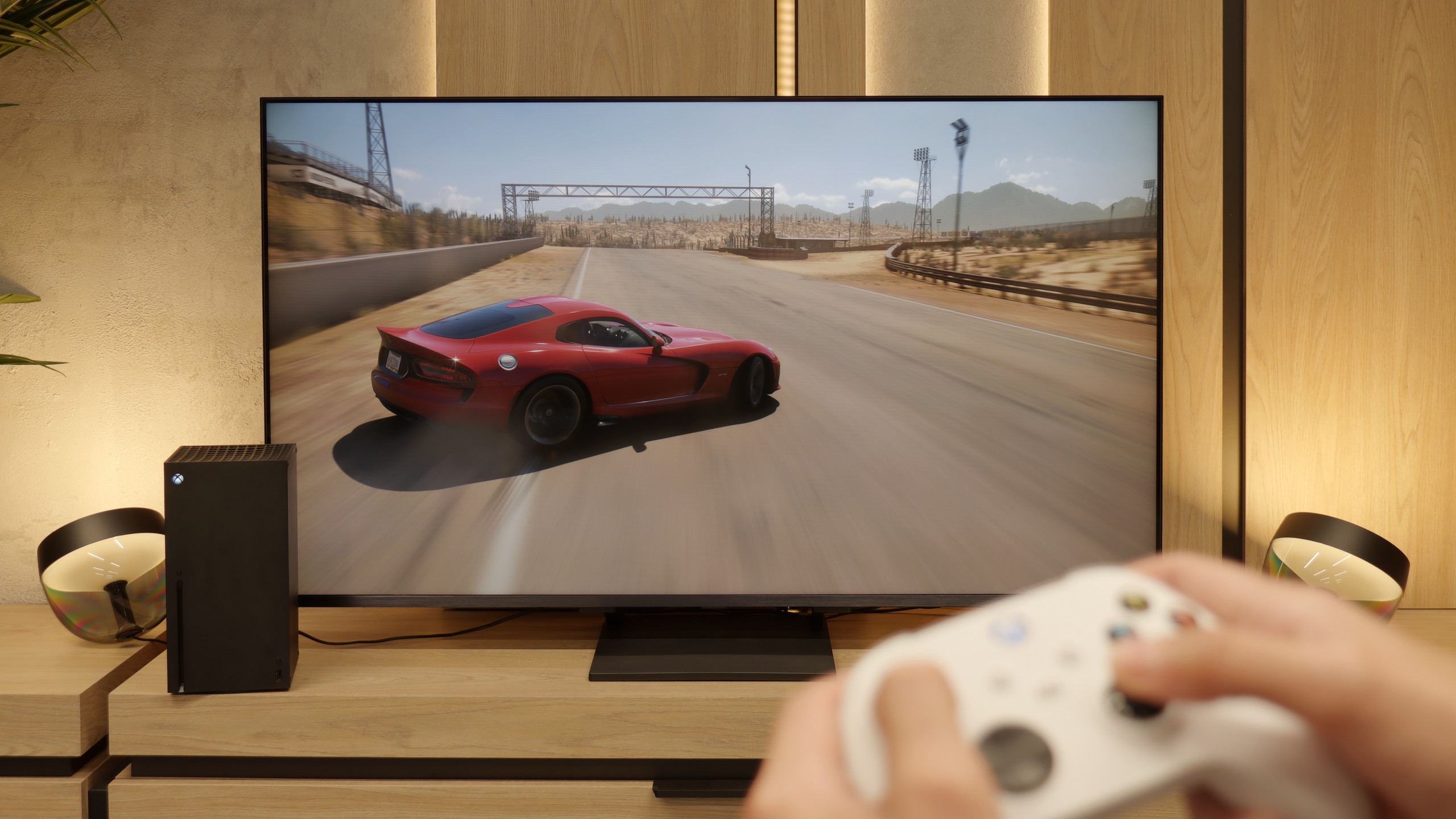
Panasonic Z95A this year shows that the manufacturer has made a huge leap forward in support for gamers. The television offers practically everything you can expect from a device in this range. Support for ALLM (Auto Low Latency Mode) and VRR (Variable Refresh Rate) ensures smoothness and no tearing in dynamic games. The 144 Hz panel allows for incredible fluidity, and the additional support for resolutions other than 4K provides greater flexibility, which is a big plus for gamers using various configurations.
Also noteworthy is the unique and rather specific "Game Bar." Its bubble interface stands out from the competition and allows quick adjustment of key settings such as VRR, brightness level, or picture mode, without the need to interrupt gameplay.
However, in this class of devices, there has been a slight disappointment – Panasonic Z95A only offers two HDMI 2.1 ports instead of four. This is definitely too few for a premium television, especially in times when many people have more than one device requiring full HDMI 2.1 support, such as a next-gen console or a high-end computer. In this category, it's hard to accept, especially given the high aspirations of this model. Despite this, the television is an excellent choice for gamers, offering versatility and functionality at the highest level.
LG QNED93A is a television that has undoubtedly been designed with gamers in mind. Right from the start, we get a complete package – all four HDMI ports operate in 2.1 standard, so whether we connect a console, a PC, or a receiver, we have full compatibility. This is important because many manufacturers still limit themselves to two ports, and here nothing stands in the way of having maximum capabilities for all the equipment. There’s also an automatic game mode (ALLM), which automatically switches the television to the appropriate settings when the console is turned on, as well as variable refresh rate (VRR). This means the image doesn’t stutter or glitch, even when the frame rate drops – whether in dynamic shooters or during races.
The 144 Hz panel gives an additional advantage in computer games. While 120 Hz is enough for consoles, the QNED93A allows PCs to push even more – every movement, every glance to the side is refreshed faster, which makes a difference especially in e-sports. The manufacturer also considered HDR in games – the television supports HGiG mode, which are guidelines intended to ensure that the lighting effects are exactly as the game developers intended. To top it off, we get Game Bar – a special information bar called up on the screen that shows parameters in real time. You can check the frame rate, active VRR functions, or input lag levels. This solution is useful not only for settings enthusiasts but for anyone who wants to quickly check what mode the television is operating in and whether everything is working as it should.
Input lag
10/10
9.8/10
SDR
HDR
Dolby Vision
Panasonic Z95A impresses with an outstanding level of input lag, making it one of the best choices for gamers in its class. Regardless of the mode, the television achieves results of around 13 ms at 60 Hz and just 5 ms at 120 Hz, ensuring an incredibly smooth and responsive gaming experience. Moreover, Panasonic allows gaming in Dolby Vision mode without significant delays. Well done!
In the delay field, the LG QNED93A has nothing to be ashamed of. The television responds instantly to our actions, which is evident from the first tests with the controller in hand. In 120 Hz mode, the input lag drops to around 7 ms, meaning almost immediate reaction – shots, passes, or precise movements of the stick are instantly reflected on the screen. For 60 Hz content, the result slightly increases to just under 15 ms, but it still remains within the full comfort zone. An interesting feature is the Dolby Vision mode for gaming, which on the QNED93A works with the Xbox Series X console. Here, the lag increases to about 20 ms. In theory, this could be considered a deterioration, but in practice, it's still a very good result. Even with such a demanding picture standard, gameplay remains dynamic, and the differences in control are practically imperceptible.
Compatibility with PC
8.6/10
8.6/10

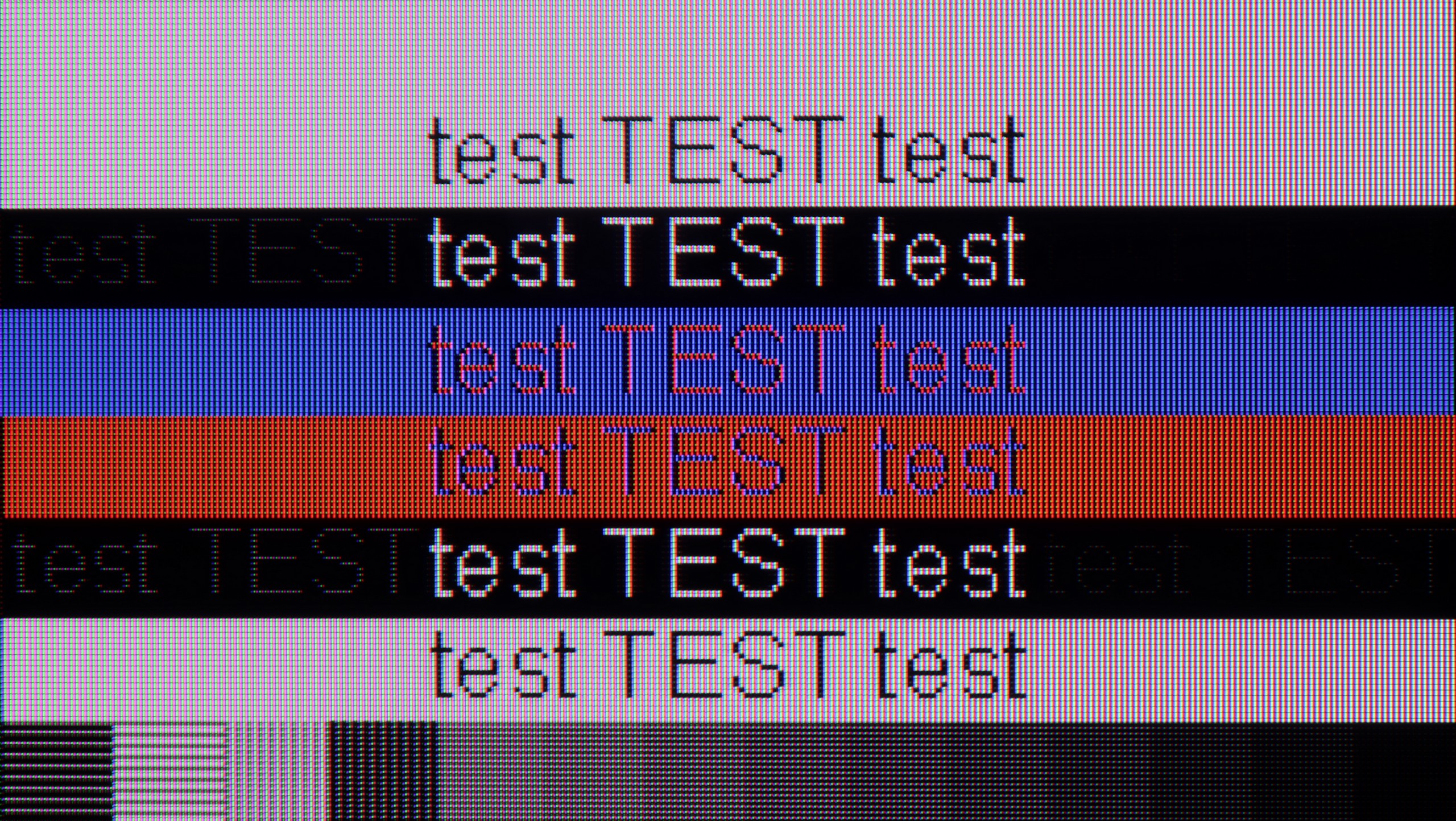
Panasonic Z95A works brilliantly with computers, offering full support for chroma 4:4:4, which translates to very good font readability. However, it’s important to keep in mind the characteristic display method of WOLED panels with a white subpixel, which can be noticeable during prolonged work with documents or while browsing websites. This is something to consider if the television is to be used as a monitor for work.
Additionally, the support for G-Sync technology is a great bonus for gamers using NVIDIA graphics cards. As a result, the Z95A provides smooth gameplay without tearing and delays, making it a versatile device for both work and play.
A new feature in this year's model is full support for 144 Hz refresh rates, which PC gamers will appreciate. The QNED93A works with both Nvidia graphics cards, offering compatibility with G-Sync, and AMD products, where it operates with FreeSync Premium Pro. Thanks to this, gameplay is smooth, without screen tearing or stuttering, and the panel performs very well in dynamic e-sports titles and demanding AAA games.
Equally important is the clarity of the image for everyday work. The TV supports chroma 4:4:4, so fonts in Windows and apps are sharp and clear. However, we noticed a minor detail – with a dark background and bright letters, subtle horizontal stripes may appear due to the arrangement of subpixels. This is a minor detail that does not affect the comfort of using the TV on a daily basis, but perfectionists may notice it after prolonged text interaction. However, we don’t think anyone would want to work on a 55-inch screen from less than 1 metre away 😉.
Viewing angles
9.7/10
2.9/10
The viewing angles on the Panasonic Z95A are outstanding, thanks to the use of an OLED panel with MLA technology. This means the image remains sharp, full of detail, and free from visible colour shifts even at steep angles. In practice, this means that regardless of where we are watching the TV from, the picture quality stays at the highest level.
In this regard, the Z95A ranks among the very best, competing for the title of leader with TVs based on QD-OLED panels (Samsung and Sony). It's hard to find anything better on the market, making this model an ideal choice for larger rooms or movie nights with family and friends, where everyone can enjoy a perfect picture.
QNED93A uses a VA panel, and that means one thing: the category of viewing angles becomes its Achilles' heel. Already at a tilt of around 45 degrees, brightness drops by up to 80%, and colours start to noticeably fade. This is the natural price for the high contrast offered by VA panels. There is no additional coating to improve angles, as is found in some more expensive models, so the QNED93A looks best when viewed head-on. If you’re planning a large family viewing, where some viewers will sit further to the side, you need to be aware that the image won't be as attractive as it is in the centre of the screen.
TV efficiency during daytime
6.2/10
6.2/10

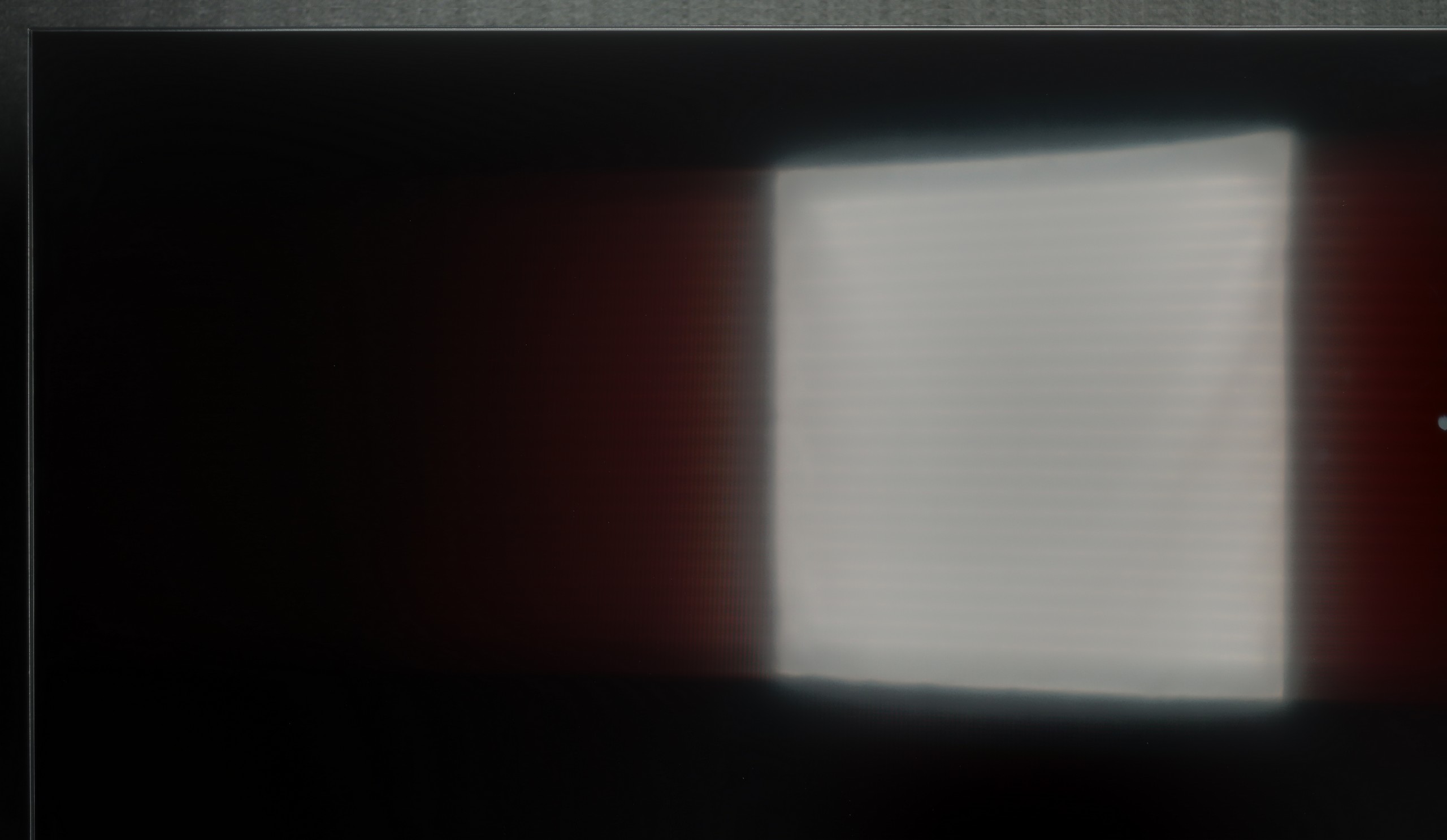

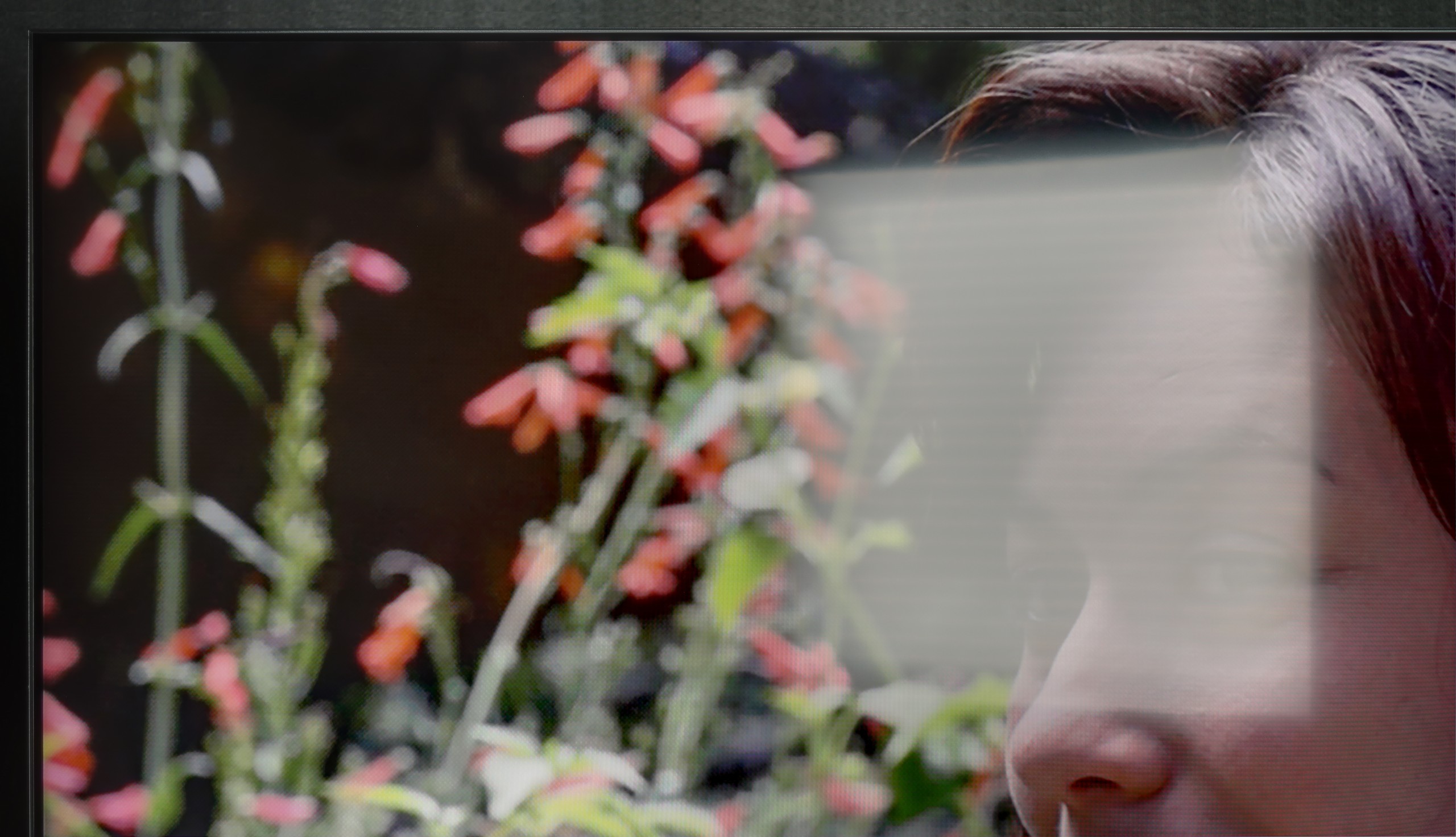
Matrix brightness
Average luminance SDR
LG QNED93A / QNED90A: 546 cd/m2
Panasonic Z95A: 493 cd/m2
Panasonic Z95A is equipped with a glossy panel that does quite well at reducing reflections. However, due to the use of micro lens array (MLA) technology, black levels in bright environments can take on a slightly cherry hue, which is particularly noticeable in heavily lit rooms. In terms of brightness, the average SDR value is around 500 cd/m², which comfortably allows for enjoyable TV viewing in most living rooms. It should be noted, however, that in very sunlit conditions or under intense artificial lighting, this brightness may prove inadequate to completely eliminate reflections and maintain ideal contrast. Nevertheless, in typical home conditions, the Z95A performs very well.
LG QNED93A uses a satin matrix, which moderately deals with reflection suppression. It is definitely not at the level of matte screens, but it does not have the feeling of a mirrored surface like models with a glossy finish. This means that reflections are not as distracting, and the colours maintain their intensity even when light from the window hits the screen. The brightness is also a plus. The average level in HDR mode hovers around 550–600 nits. This means that the TV performs well in well-lit rooms, and you can enjoy viewing even when watching movies during the day, with only partially closed blinds. As a large screen in the living room, the QNED93A performs really well.
Details about the matrix
Subpixel Structure:

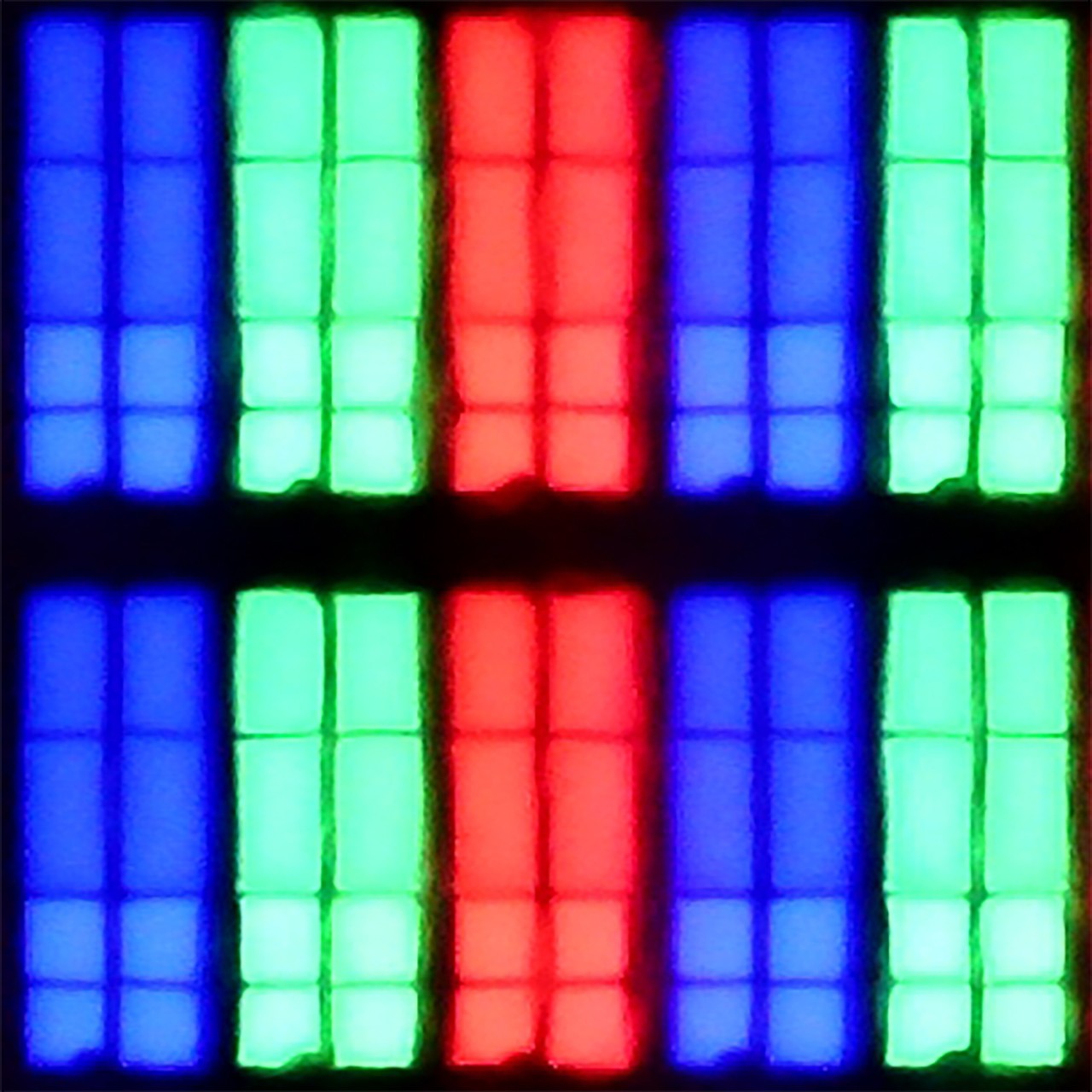
Panel uniformity and thermal imaging:

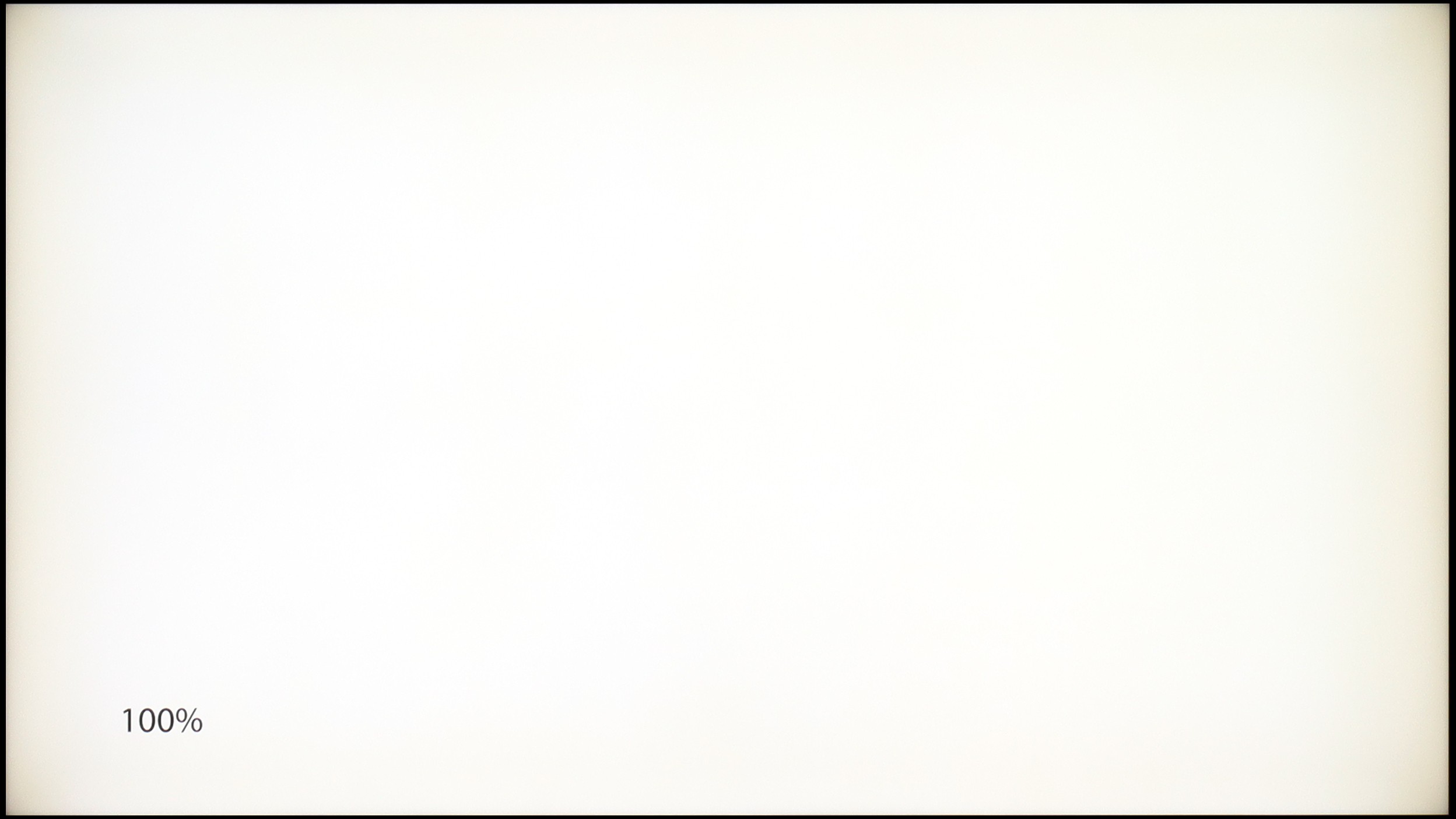
Panasonic Z95A
LG QNED93A / QNED90A
TV features
7/10
8.2/10
- HDMI inputs2 x HDMI 2.0, 2 x HDMI 2.1 48Gbps0 x HDMI 2.0, 4 x HDMI 2.1 48Gbps
- OutputsToslink (Optical audio), eARC (HDMI), ARC (HDMI)Toslink (Optical audio), eARC (HDMI), ARC (HDMI)
- Network InterfacesWi-Fi 2.4GHz, Wi-Fi 5GHz, Ethernet (LAN) 100MbpsWi-Fi 2.4GHz, Wi-Fi 5GHz, Ethernet (LAN) 100Mbps
- TV receptionDVB-T, DVB-T2, DVB-S, DVB-S2, DVB-CDVB-T, DVB-T2, DVB-S, DVB-S2, DVB-C
Classic features:
- Recording to USB (terrestrial TV)
- Recording programming
- Picture in Picture (PiP)
- RF remote control (no need to aim at the screen)
- Backlit remote control
- Teletext
- Audio only mode
- Bluetooth headphones support
- Simultaneous Bluetooth headphones & TV audio
Smart features:
- AirPlay
- Screen mirroring (Windows Miracast)
- Voice search
- Voice search in native language
- Ability to connect a keyboard and mouse



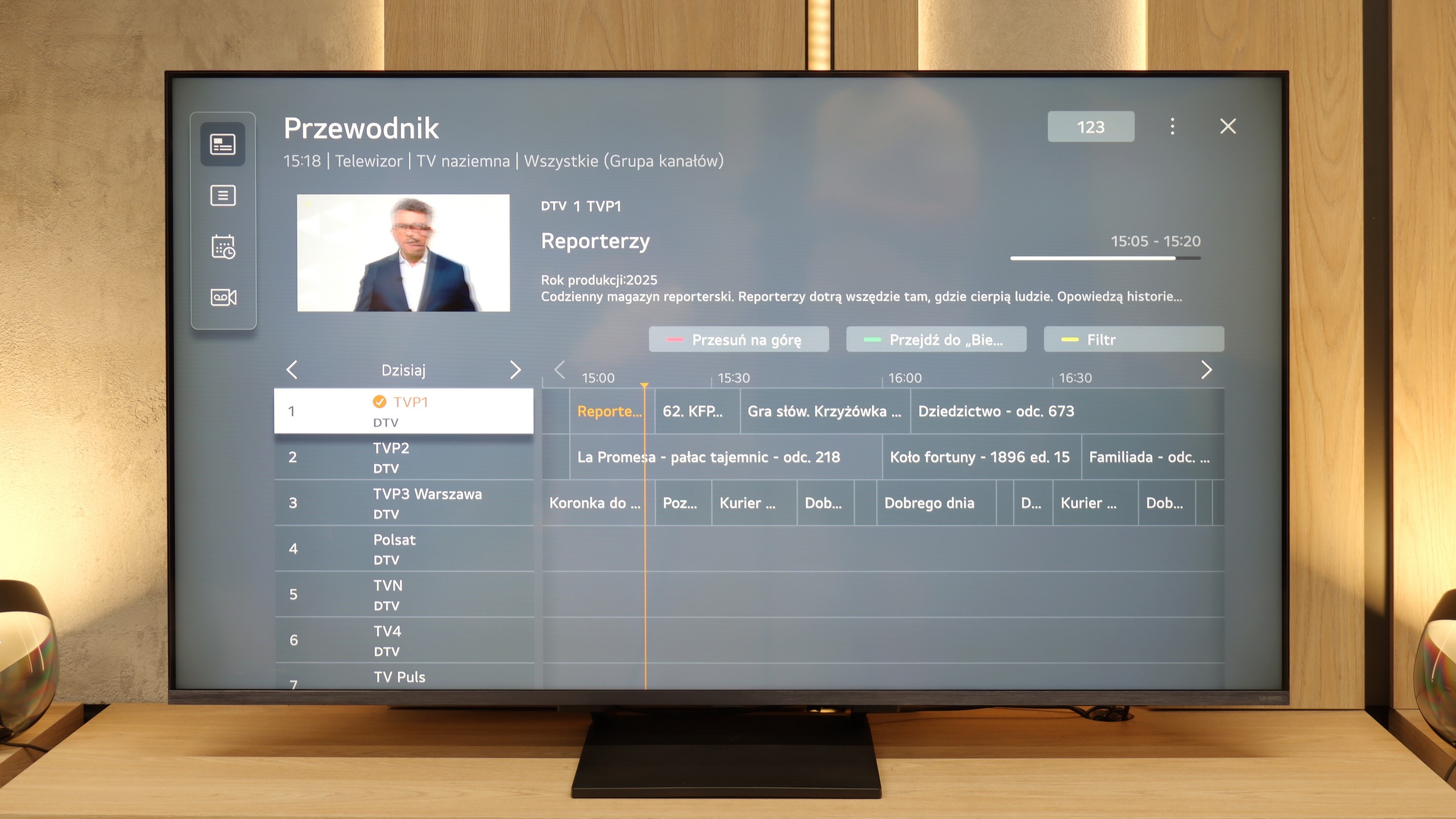
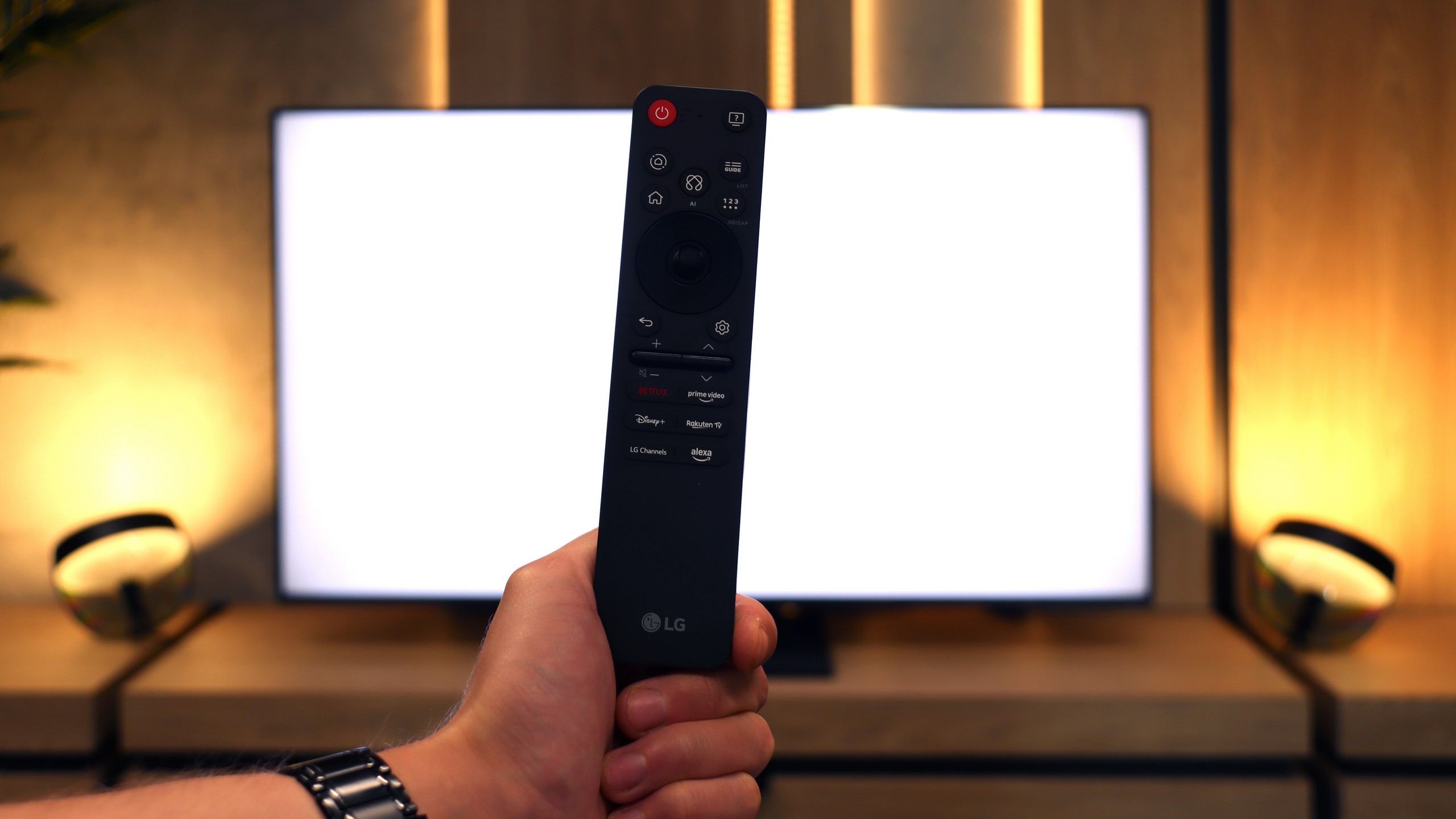
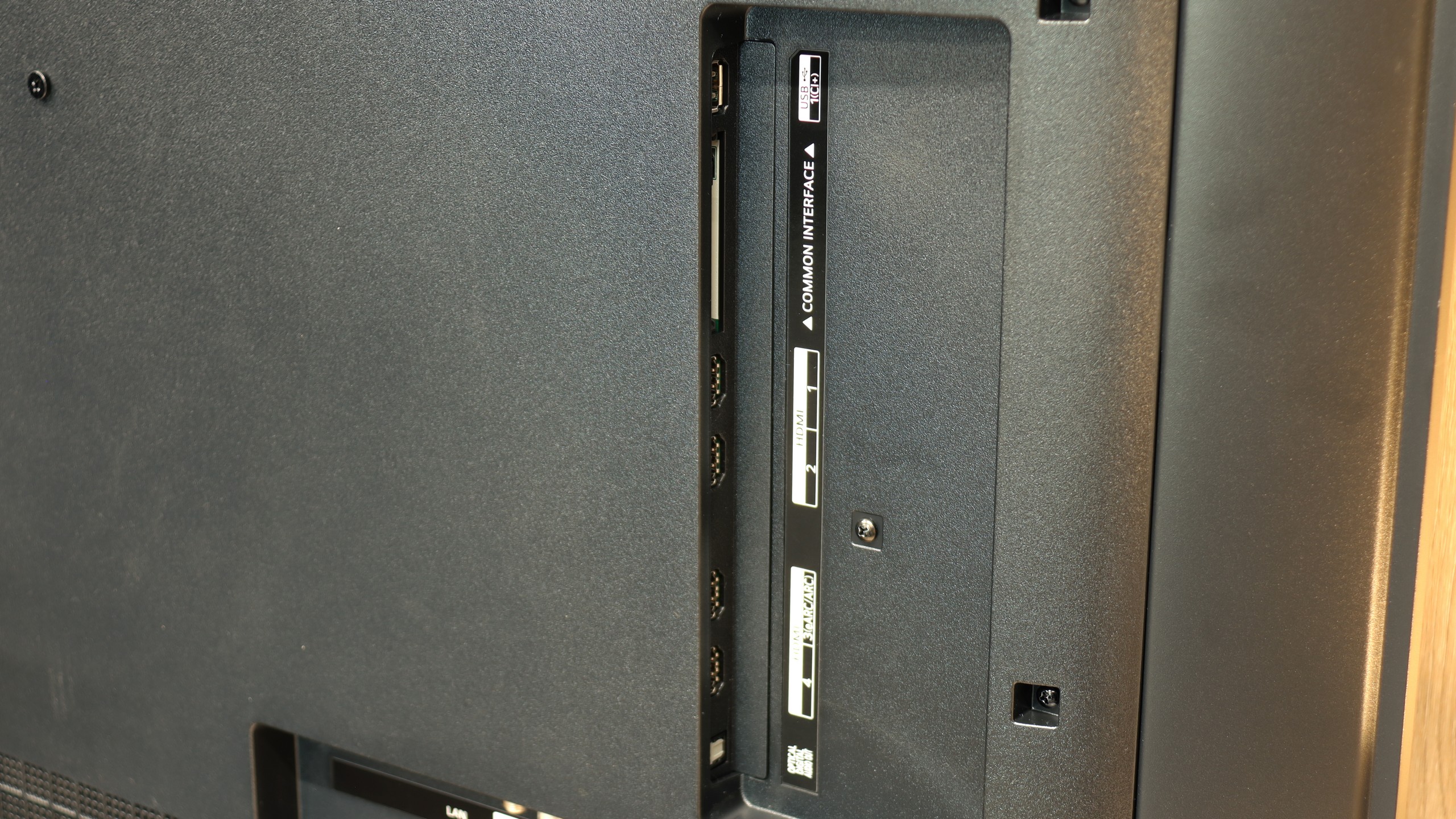
Panasonic Z95A introduces a new operating system, which we think is a very good move compared to last year's MZ2000 model. The system is called Fire TV and was created by Amazon. It is a novelty in the Australian market, standing out for its fluidity and responsiveness, providing comfortable navigation and quick performance in everyday use.
Despite numerous advantages, the system still has a few shortcomings. Some popular applications, such as SkyShowtime, as well as Australian streaming services like Player.pl or TVP VOD, are not available. Another drawback is the quality of the interface translation – many functions have been translated in a rather imprecise way, giving the impression that the translation was done "on the fly." Some names are unclear, especially for those who have not previously interacted with other televisions, which may hinder the use of the device.
In terms of user functionality, the Z95A performs very well. It includes options such as USB recording, support for PiP (picture in picture), AirPlay, and Miracast. Because of this, the television offers versatility and meets most demands of modern users, although the Fire TV system still requires refinement to fully compete with more established solutions on the market.
Smart Features
QNED93A runs on webOS, one of the most enjoyable Smart TV systems. It comes equipped with AirPlay, Screen Mirroring, Chromecast, and convenient voice control. The platform is fairly intuitive and generally quick, though in the tested unit, there were moments when the response to the remote's touch required a moment of "thought". However, it’s hard to classify this as a serious issue – webOS remains a refined system and will likely receive further updates that will enhance it.
Classic Features
In this model, LG didn't include the old Magic remote with a numeric keypad, but the TV performs excellently as a screen for daily viewing of antenna channels. The EPG interface is clear, the TV offers a TV guide, and we have the option to record programs from the built-in tuners directly to a USB drive. Everything works correctly and intuitively. We just missed the PiP functionality, which is offered by only two manufacturers in 2025.
Magic Remote
The Magic Remote is still the biggest difference compared to the competition. In 2025, it underwent a slight redesign – it has fewer buttons and resembles some of the minimalist remotes from Samsung. However, the cursor remains key, functioning like a magic wand. Just move your hand, and the pointer on the screen follows your movement. It’s incredibly simple yet very convenient. Navigation in the menu or entering passwords is significantly quicker, and it’s hard to switch back to traditional buttons afterwards.
Playing files from USB
3.1/10
8.8/10
Supported photo formats:
Maximum photo resolution:

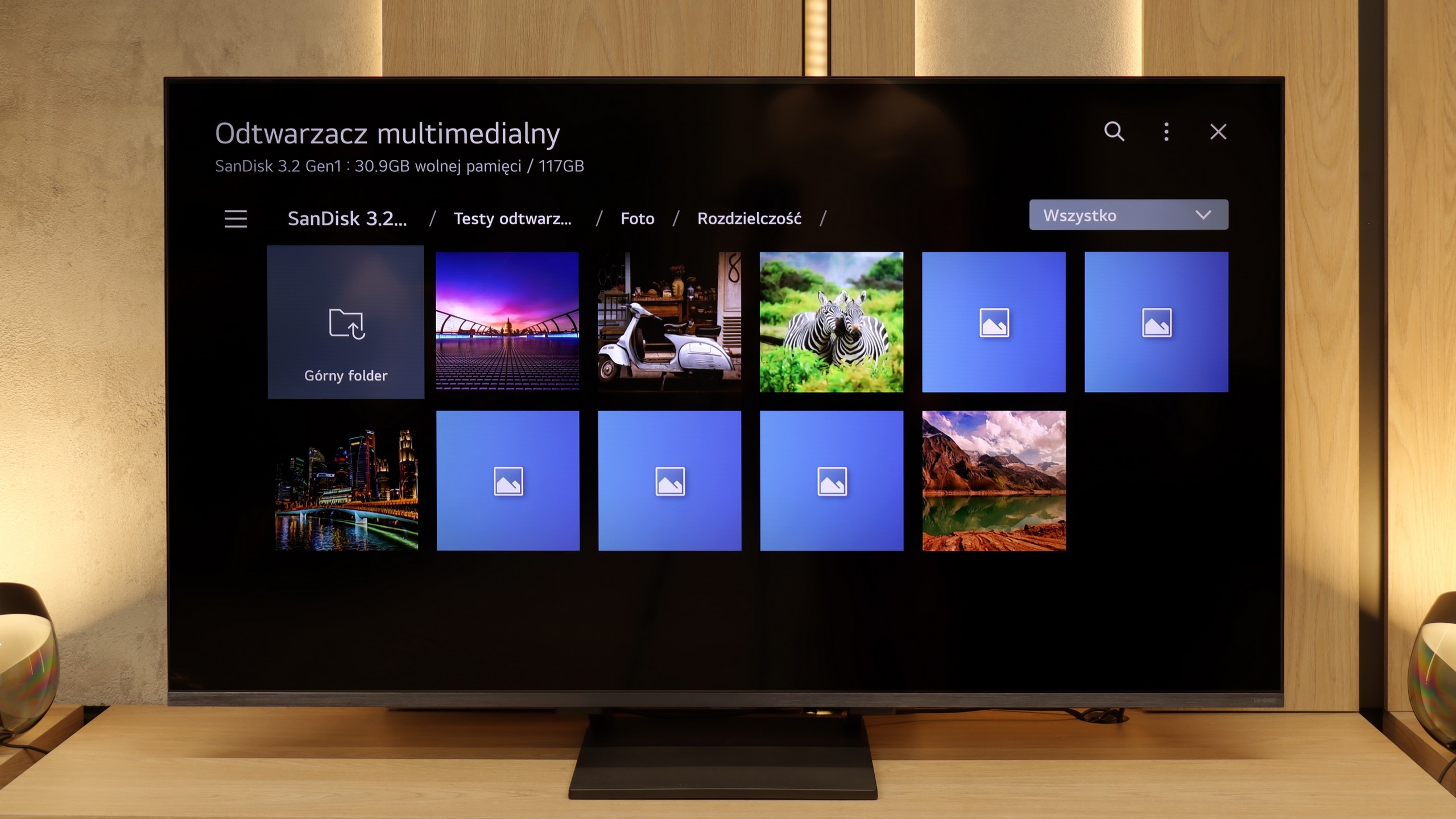
As we mentioned earlier, the Fire TV system in the Panasonic Z95A has some issues with supporting the Polish language, which unfortunately is also noticeable when playing files from a USB memory. The built-in media player does not allow for the correct display of Polish characters, such as "ź", "ć" or "ł", which can be burdensome for users relying on local subtitles for movies. If correct display of Polish characters is important to the user, it may be necessary to use an external application available in the Amazon store or to stream content through other devices.
The built-in media player in the LG QNED93A handles most popular video and audio formats with ease, so it’s more than sufficient for basic use. However, during testing, we noticed two minor hiccups. The first is the lack of support for HEIC files, which are Apple’s photo format. The manufacturer claims that the TV should open them, but we couldn't confirm this in practice. The second issue concerned text files with subtitles in TXT format. Fortunately, other more common subtitle formats worked without any problems, so it’s hard to consider this a significant limitation in everyday use.
Apps
6.1/10
9.1/10














































Sound
8.7/10
6.9/10
- Maximum volume-81dB
- Dolby Digital Plus 7.1
- Dolby True HD 7.1
- Dolby Atmos in Dolby Digital Plus (JOC)
- Dolby Atmos in Dolby True HD
- DTS:X in DTS-HD MA
- DTS-HD Master Audio
The sound in Panasonic Z95A is one of its strong points, mainly due to the built-in soundbar that provides impressive audio experiences. Support for Dolby Atmos makes the sound spacious and full of depth, perfectly fitting into the cinematic experiences. Both dialogues and sound effects sound clear and dynamic, which will satisfy even the most demanding users. Unfortunately, there is a lack of support for the DTS format, which may be disappointing for those using movies or content that require it. Nevertheless, the overall sound quality in Z95A is at a very high level and successfully replaces external audio systems (at a reasonable price) in most home applications.
LG QNED93A sounds quite pleasant for built-in speakers in a television. The sound is fairly clear, and at moderate volume levels, vocals and dialogue come through distinctly. The bass, as is often the case in relatively slim designs, isn't the strongest, but its presence is noticeable and is more than sufficient for daily TV show watching. The maximum volume reaches around 81 dB and doesn't lead to significant distortions, although during more demanding cinematic scenes, it's evident that the system has its limitations. Overall, the sound can be described as adequate and not off-putting. It definitely won't compete with a soundbar, but it won't ruin your movie experience either.
Acoustic Measurements
No acoustic data
81dBC (Max)
75dBC


